Weed Tips + Gift Guides + Travel/Style
Whether you're new to the world of weed or a seasoned smoker, our goal is to empower women with the knowledge they need to make informed choices about their cannabis use. So, join us as we explore the world of cannabis and discover all the ways it can enhance your life.
High Herstory creates space for women & femmes who love weed while bringing to life meaningful, stigma-changing content at the intersection of cannabis and culture.
Your Complete Guide to Delta 8 THC, featuring BudzBurn
Delta-8-THC seemed to pop up out of nowhere and quickly become a popular recreational choice for people looking for a light cannabis high. We took a deep dive into the world of Delta 8, what it does and how to incorporate it into your life safely.
Delta-8-THC seemed to pop up out of no where and quickly become a popular recreational choice for people looking for a light cannabis high. We took a deep dive into the world of Delta 8 after being reached out to by the company Budzburn, a CBD company that provides worldwide wellness through high quality CBD Hemp Flower. We were lucky enough to get our hands on some of their products and we will give our review of some of them later in this article. But first, let’s discuss more in depth what Delta-8 THC and what it does and how to incorporate it into your life safely.
What is Delta-8?
Delta 8; formally known as Delta-8-tetrahydrocannabinol, is an isomer and cannabis compound found in very small amounts in cannabis and hemp plants. Delta-8 has a chemical structure that’s similar to the Delta-9-tetrahydrocannabinol. Or as it is better known, the psychoactive compound found in cannabis that gets you “high”. When people mention THC, they usually mean Delta-9 which is highly concentrated in some cannabis plants. Delta-8 is derived from hemp but scientifically it is reffered to as Deltha-8-THC.
How will Delta-8 make me feel?
Many people have described delta-8 as “light cannabis” or “diet weed”. It is said to have a milder effect than most cannabis strains with milder side effects too. Users note that is less likely to cause paranoia, anxiety or drowsiness when ingested. But if you are wondering what Delta-8 makes you feel like, we can really only speak to our own experience with it because everyone’s body and their body chemistry is different.
Budzburn CBD was kind of enough to send us some of their products so we could sample delta-8 in it’s various forms. We will be reviewing the products below but overall we can describe how their edibles made us feel. It is said to have a milder high experience and for me that was true. I felt silly and giddy after having a quarter of a gummy (about 20 mgs) and I was in a good mood for most of the night without feeling drowsy or tired the way that that does of THC edible would probably make me feel. I started with a low dose because I feel that is the best practice with gummies and edibles so I would encourage you do to the same if you plan on giving delta-8 a try.
Will Delta-8 make me high?
For me, Delta-8 gave me a lifted feeling similar to consuming cannabis but less intense. It wasn’t as prominent as what I am used to but I have a high tolerance for cannabis products. I felt creative and calm but in a very subtle way. It’s important to remember that everyone experiences things differently, so again I would stress starting with a low dose and giving it plenty of time to kick in before jumping to inhale the next bite. That’s always the difficult part with edibles, but finding the proper dose for your body will help you feel confident in your experience.
Is Delta-8 federally legal?
Delta-8 is currently legal in most states thanks to ambiguous wording in the 2018 Farm Bill that brought about the legalization of hemp products. Delta-8 is a new product so it lives in a legal grey area because many state laws don’t yet exist to address or regulate it. Delta-8 is derived from CBD extracted from hemp but it scientifically is referred to as delta-8-THC. In states like Colorado and Oregon, delta-8 THC is banned from being sold there. The law varies state to state so be sure to check if delta-8 is legal where you are before trying it.
Is Delta-8 CBD?
This is where stuff gets a little confusing, so please bear with us as we lowly bloggers try to explain science. Delta-8 is created from CBD derived hemp, but technically it is categorized as delta-8-THC because of it’s genetic makeup. Hemp and cannabis are closely related plants in the cannabis family. delta-8 is an isomer of delta-9-THC and is manufactured from CBD derived from the hemp plant because delta-8 occurs in small amounts in the hemp plant. The main difference is delta-8 and CBD are both cannabinoids, but delta-8 has more in common with delta-9 THC than CBD. Unlike CBD, delta-8 produces psychoactive effects.
Not all Delta-8 companies are created equal
You’ve probably heard about Refinery 29’s recent article, I Took A Delta-8 Gummy Before Going On A Run. Things Got Weird — Really Weird. Among a very strange telephone interaction with the founder of a Delta-8 company, author Molly Longman describes the importance of reading a COA, or Certificate of Analysis, and you should absolutely make sure you increase your literacy when it comes to reading lab reports. You definitely should learn how to read a COA before you buy Delta-8.
We took it a step further and actually called the lab to verify BudzBurn’s COA. We personally confirmed that their results were accurate and had not been falsified.
What is THC-O acetate?
It’s especially important to check lab results because a lot of companies are promoting THC-O acetate as Delta-8. What is THC-O acetate?
According to cannabis and endocannabinoid researcher Dr. Ethan Russo, M.D. in this interview with Hemp Grower Magzine:
“It starts with tetrahydrocannabinol, better known as THC. That's the natural product that is the main psychoactive component of cannabis. THC-O acetate is what's called a semi-synthetic derivative, or analogue. Through a chemical process using a very toxic chemical called acetic anhydride, you can turn some of the delta-9 THC into THC-O acetate.
Why would someone do this? Well, one reason would be that—reportedly—this is twice or maybe three times more potent than THC. Is that helpful? I'm going to say no, and the reason is that THC is what's known as a weak partial agonist at the CB1 receptor. Now, let's break that down: Weak is easy to understand. Partial means that its binding isn't super tight. Agonist means it stimulates the CB1 receptor, which is the mechanism of action that produces the high of THC, as well as many of its therapeutic properties, including pain reduction, et cetera.
Potent sounds good. But this is a system in the body—the endogenous cannabinoid system—that works with a great deal of subtlety. In other words, what is needed when you're using a drug to stimulate the system is a gentle nudge, not a violent push that comes from something that is a lot stronger than THC itself. So, potent is not necessarily better.
If something is less potent, you can overcome that by using a higher dose. But for many medical purposes, doses of THC that are quite low are what are needed and what is desirable rather than higher doses, which are going to be more associated with side effects than benefits.”
Another reason to be extra careful when you’re buying cannabis products and purchase from companies you can trust.
BudzBurn — How Do You Burn?
In addition to verifying their lab results, we also got excited about BudzBurn’s products because they work closely with the Director of Cannabis at the Florida Department of Agriculture to make sure the products meet legal standards. That, and Tommy Chong is also a fan of Budzburn! We tried their products and here’s what we think.
Delta 8 Product Reviews
Delta 8 THC Gummies
These Delta 8 gummies come in a two-pack and are perfect for on the go. The suggested serving size is one gummy which contains 50 mg of Delta 8 THC each. These are extra-strength gummies. We definitely recommend splitting up one gummy into four parts and starting slowly with these. I shared half of one with a friend who doesn’t have my tolerance and he forgot the code to his building…let’s just say these are pro gummies.
They are also delicious. I had the Strawberry Cream flavor but these also come in Blue Razz, Lemon Drop, Raspberry Dream, and Key Lime.
MoonRocks
Budzburn’s Delta-8 THC Moonrocks start with a nug of Premium OG Legendary hemp flower that is soaked with Delta-8 THC Distillate and lastly coated with pure CBG Kief.
If you high a high tolerance and are looking for something strong, I think you’d be really into these moon rocks. They smell amazing and the high was immediate and really perfect for my at-home yoga session. I felt really blissed out in the stretches and the moonrocks just intensified the experience of self-love.
I tried the Watermelon Zkittles Indica Strain. It has a fruity watermelon flavor that was really uplifting. I really love that BudzBurn never treats their hemp buds with pesticides and everything is grown and packaged in the USA.
TIP: Do not use your grinder when preparing your Moon Rocks as you may lose a lot of kief in the process. For the best smoke and taste, tear the moon rock into small pieces and smoke it in a pipe or bong!
Fruity Krunch Cereal Bar
So, please keep in mind this is an extra-strength 200mg bar and the typical serving size is 1/4 of the cereal bar which contains 50 mg of Delta 8 THC, making the total Delta 8 200mg. We always recommend starting low and slow with any edible, especially if you’ve never tried Delta 8 before. I started out with just a bite but ended up eating the entire 1/4 serving. It was a fun, creative, silly high that made my walk around the neighborhead extra fun.
As for the taste, I am a HUGE fan of breakfast cereal baked goods so I knew I had to try this. It’s perfectly crispy and the right amount of sweet. 10/10 recommend and you get a lot of bang for your buck here!
Pre-Rolls
Pre-rolls are my jam right now because they are so convenient and I LOVE smoking joints, so I was excited to try these. I chose Bubba Kush, its an indica with a smell and flavor that's both fruity and earthy, with a little of an expresso bean after taste. It also has Super Sour Diesel terpenes: Beta caryophellene, Limonene and Humulene, that give it an earthy, spicy sweetness.
After a couple of puffs I felt euphoric and relaxed. I really appreciate that BudzBurn rolls their pre-rolls with Raw papers which is a company I also know and trust. To be honest, I was having a bit of a stressful day when I tried the pre-roll and I definitely felt my mood improve afterward. I had some more work to do so I capped it at four deep pulls, put out the pre-roll and saved the rest for later. I got into the flow with some organization I had to do and the time flew by. After I had accomplished a couple hours of work, I smoked the rest of the pre-roll and sat down on my couch to watch a movie. Highly recommend for anyone wanting the immediate effects of relaxation, pain relief and mood-boosting.
BudzBurn has offered a special 40% discount code for our readers with code: HighHerstory40
Our editors pride ourselves on finding the best products and companies out there, this post is sponsored but rest assured we only promote products we genuinely have tried and believe in.
How to read a CBD Product Lab Report
Have you ever bought a CBD product? If yes, then you must have received a piece of paper with numbers and technical jargon that go above your head. Well, that’s called a lab report or the Certificate of Analysis (COA). Most people don’t pay attention to the reports but it’s one of the most important pieces of information that determine whether or not the CBD product in your hand is as safe and good quality as the brand claims.
Have you ever bought a CBD product? If yes, then you must have received a piece of paper with numbers and technical jargon that go above your head. Well, that’s called a lab report or the Certificate of Analysis (COA). Most people don’t pay attention to the reports but it’s one of the most important pieces of information that determine whether or not the CBD product in your hand is as safe and good quality as the brand claims.
Now, everyone who consumes CBD regularly must learn how to read a CBD product lab report. After all, it’s one way to be an aware consumer. But if you don’t, keep reading and you will be able to read a lab report by the end of this blog.
Why Do You Need to Read a COA?
CBD is not FDA regulated. This is one of the reasons why medical marijuana doctors do not ‘prescribe’ CBD. All CBD products in the market do not have a quality standard that they have to pass in order to be sold legally. With FDA regulations out of the picture, how do you determine if a CBD product meets quality and safety standards? With a Certificate of Analysis.
As per the guidelines of the USDA and the State, it is necessary for all CBD products to be tested. So, most CBD manufacturing companies partner with third-party laboratories to test their products for safety and quality. These lab reports present details about different tests conducted on a product that is easily available for the consumers. You can access the report online on the company’s website and go through the details to make sure that quality and safety standards are met.
Now, the main question is- do you know how to analyze a COA? If not, here’s a simple explanation on how to begin and read a lab report.
Check the Certification of the Laboratory
The first step is to check the name of the laboratory along with the address. It should be at the top of the report and clearly visible. Now, your job is to do a simple Google search and make sure that the laboratory is third-party accredited and has an International Organization for Standardization (ISO) certification.
It is extremely important that the tests are conducted by a third party. That’s because the whole purpose of third-party lab tests is to ensure that the reports are unbiased and present a true picture of the product and its composition. The ISO certification further ensures that the testing process meets international standards developed independently to ensure quality and safety.
So, when buying CBD products, you should avoid using products without a lab report or one with reports that are labeled as ‘in-house’.
The footer of the lab report is also important and should contain the signature and license number of the laboratory as a means to clarify that they are accountable for all the results produced in the report.
First Things to Look For
After identifying the laboratory and its certification, your eye should move over to the header of the report. You can find a few sections at the top of the COA that will help you verify if the report is legit.
Date of Report
The date of the report should be as recent as possible. Most brands conduct tests on their products after every six months. Do not accept COAs that are more than 3 years old as they are considered expired.
Batch Number and Product Description
Products are manufactured in batches and each batch is tested by the labs. You must check the product description and the batch number on your product and the lab report to ensure that the report is of the product you have received.
Pass or Fail Status
The next step is to check for the pass or fail status.
As you go along the report, you will find names of different tests conducted on the product. If you do not like to go into the details, the least you can do is make sure that each test has a ‘pass’ or ‘passed’ under the status section.
Cannabinoid and Terpene Analysis
CBD products have to go through cannabinoid and terpene analysis to give you a detailed picture about the different cannabinoids and terpenes present in the product. When reading this analysis, you need to take care of the following points:
The total CBD in the report should match the claims on the label.
The total THC in full-spectrum CBD products should be less than 0.3% for the product to be Farm Bill Compliant.
Products labeled as CBD isolates and THC-free should have Non-Detectable (ND) levels of THC.
The total terpene percentage should match the claims of the brand.
You can go through the list to learn the different terpenes and cannabinoids present in the product and their potency and also have an idea about the effects and benefits you can expect. The results are represented in mg/g or mg/ml to tell you how many mg of cannabinoids or terpenes are in a gram or milliliter of a product.
Safety Tests
The safety of a CBD product is ensured by conducting a series of tests to check the presence or absence of harmful chemicals or contaminants that can be harmful or even fatal for the human body.
In order for a CBD product to be safe for consumption, it should pass each of these tests conducted by third party labs:
Pesticides
Microbials
Mycotoxins
Solvents
Heavy Metals
Moisture and Water Activity
Your CBD product is safe to consume if the lab report says ‘passed’ for each of these safety tests.
Takeaway
Reading the Certificate of Analysis is just as important as reading the label. It’s the only way you can identify scams from quality CBD products. From the potency of the product to the presence of harmful chemicals, it can help you learn about each of these important details. So, next time you receive a CBD product, be an aware consumer and do not forget to read the lab report.
Cannabis-friendly Parenting: Are '420 Moms' the New 'Wine Moms?'
Imagine if a mom posted a photo on Instagram of her smoking a joint with her son across the living room playing with his toys? She can surely expect her inbox to be jammed with hate mail. However, no one will care if she drinks red wine during the day. After all, “wine is good for the heart.”
Imagine if a mom posted a photo on Instagram of her smoking a joint with her son across the living room playing with his toys? She can surely expect her inbox to be jammed with hate mail. However, no one will care if she drinks red wine during the day. After all, “wine is good for the heart.”
For years, society has normalized the mommy wine culture. Many women begin their evening with a glass of Cabernet at around dinnertime. And kill the rest of the bottle once the kids are in bed. Mommy deserves that wine and the opportunity to relax after a day spent balancing between career and family life.
However, a new wave has outdone the wine mom culture. It's called the “420 moms culture.” According to statistics, Americans bought $18 billion worth of cannabis in 2020 alone. This marks a 71 percent jump from 2019.
Why Is Mommy Abandoning Wine and Shifting to Cannabis?
Legalization of Cannabis
As of May 2021, 18 states had ratified legislation to allow for recreational use of marijuana for adults above 21 years in the U.S. Further, 36 states allowed for medical use only, based on statistics from the National Conference of State Legislatures.
Many states continue to legalize marijuana for both medical and recreational use. And as a result, the weed industry is on course to increase its worth to more than $70 billion by 2028. In effect, many parents are turning to cannabis to cope with parenting difficulties and everyday life.
Legalization has helped with the reduction of stigma, allowing cannabis-using mommies to step out of the shadows. Communities are slowly adopting a relaxed view of “420 moms” who smoke, eat edibles, or use CBD skin care products for their beauty rituals.
Save Themselves the Hangover
The Centers for Disease Control and Prevention (CDC) recommends two drinks per day for male adults to achieve moderate alcohol use and one drink each day for women. However, more and more moms end up fighting addiction problems. After a night spent drinking several margaritas, you wake up the next day with a nasty hangover. And your swollen, red face pressed against the toilet seat, throwing up.
Many wine-loving mommies have owned up to their difficulties with alcohol dependence. They openly discuss on Facebook groups and TV shows how they’ve hit rock bottom and are struggling to stay away from alcohol.
So how does the booze-loving mom escape from this dangerous cycle? Because recreational cannabis is lawful, mommy can use it as an alternative to alcohol.
As a mom of a one-year-old kid, you go through a lot of mood swings and anxiety. You don't want to turn to that Cabernet bottle or load yourself up with prescription medications. So, when mommy feels an increase in heartbeat and anxiety, a small dose of THC is enough to stabilize her breathing and restore her steady state. Fast, easy, and effective.
Online Support Communities
Medicinal weed users were often labeled negligent and erratic “potheads” by their colleagues, employers, and friends. For years, these stereotypes led to discrimination and segregation.
While moms have been puffing that joint long before the passage of legal regulations, they were not posting on their social media pages or opening Facebook weed user’s groups.
Today, weed-using moms are coming out from the shadows and openly testifying about the benefits of cannabis. For “420 moms” who don't have a cannabis community around them, social media continues to be a source of great support.
Mom influencers are on Instagram posting about the virtues of weed. On Facebook, there's a group of marijuana-using moms called “The Cannavist Mom,” with more than 35,000 members. Its catchy tagline asserts that “420 moms” should be socially accepted just like their wine-loving counterparts. Another famous Facebook group is Moms for Marijuana International, with over 500,000 followers.
Is Consuming Cannabis Safe As a Parent?
One of the most challenging parts of being a cannabis mommy is predictive dosing. While most moms know how they'll react to a glass of wine, it takes time and practice to master the amount of THC their body can accommodate while still being a functioning adult.
A mom might buy a brownie, and instead of eating a tenth of it as the typical dose, she takes several bites, which are four or five times the regular serving. She might end up extremely stoned and sick.
But it's not only their consumption of edibles that they need to watch. Children might be attracted to the beautiful packaging of the edibles and consume them thinking it's the regular cookies. This can lead to dangerous overdoses.
Tips for Consuming Cannabis at Home
While “420 moms” need to unwind from the stress that comes with raising tiny humans, it's important to do it safely and responsibly. Here are some tips that can help mommy consume cannabis safely at home:
Time It Right: Mommy should hold off on smoking until the kids are asleep. Weed is supposed to be a private time, and lighting up in front of the kids wouldn't instill confidence in them that you're doing an excellent job as a parent.
Talk About It With the Kids When They're Ready: Having an open conversation about cannabis helps them understand why you do it. Anytime you arm your kid with true and accurate information, it gives them the power and knowledge to make good decisions for themselves.
Secure Your Stash: It's pretty simple. If you don't want your kid to get to it, lock it up and explain why they can't touch it.
Bottom Line
Many “420 moms” say that consuming cannabis doesn't in any way impact their parenting abilities. They can still hold down their jobs, tend to their families, and pay the bills. The most important thing is having self-control and smoking safely.
Whether you want to use pot medically or recreationally, you need to know the risks and benefits. Consultations with your physician or therapist will help you know the right dosage and what effect a particular strain of pot will have on your body.
Canna Culture: Interview with Jess Poulin of High on Feminism
Jess Poulin, the founder of Woke Media, launched a new podcast called High On Feminism. Featuring female entrepreneurs across industries, along with female-owned and operated Cannabis/CBD brands, HOF aims to bring women to the forefront of the Business conversation, and allow for the education of the Cannabis industry especially among female consumers.
Jess Poulin is the founder of Public Relations & Creative Agency, Woke Media. A Vermont-native who ventured to New York City in 2009, Jess received her Bachelor of Arts in Communications in 2013, studying Public Relations, Music Theory and the History of the Music Industry. She has secured local and national coverage in the New York Times, Access Hollywood, Hollywood Reporter, Billboard, Rolling Stone, SiriusXM, iHeart Media and more. And helped with strategic content creation + events for clients in Music/Entertainment, Tech, Fashion, and more.
In November 2020, Jessica launched a new podcast called High On Feminism. Featuring female entrepreneurs across industries, along with female-owned and operated Cannabis/CBD brands, HOF aims to bring women to the forefront of the Business conversation, and allow for the education of the Cannabis industry especially among female consumers. Read our interview with her below!
High Herstory: You got your start doing public relations in the music industry. Do you see any crossover in the work that you do and the coverage you get in the cannabis industry?
Jess Poulin: I mean cannabis has been and always will be a HUGE part of the music industry. A majority of artists smoke weed today, and of course, so many rappers have been synonymous with weed for years...Wiz, Waka Flocka, Snoop Dogg, Lil Wayne, etc. Being a music manager as well as a publicist, you see how prominent smoking weed is in music sessions, parties, even office visits. It’s everywhere.
From the straight publicity side, my whole job is to help build brands and get them to reach the right people, so already being a publicist helps in navigating how to promote the podcast. I’ve worked with a few weed publications in the past, so I’ve brought those relationships into this project too. Especially now with all the changing legislature happening within the cannabis industry, publications you wouldn’t think would have a “weed writer” or cover that kinda topic, now do!
High Herstory: You’re the Host & Producer of the ‘High On Feminism’ podcast, a platform for female entrepreneurs to tell their stories while consuming some of the latest cannabis and hemp products. What important lessons are you and your guests looking to inspire in younger women who are jumpstarting or pivoting in their own careers?
Jess Poulin: First and foremost there aren’t enough women entrepreneur stories being told so I want to make sure we fill that gap with some badass women. Especially women of color.
Look, being an entrepreneur is awesome but is not always something that happens overnight and you really have to work at it. It’s not for everyone but that’s ok. It’s not the same thing as these Instagram “influencers” who just take pics and get paid. It’s about networking and working with integrity, and really putting in the time and effort to create the lifestyle that you want. As an entrepreneur, you need to be ready and understand that YOU are the one now in charge. If you break relationships or mess up, that’s solely on you and you’re not really able to put the blame on someone else or divert to a higher-up to handle the situation. It’s just all you.
At some point in our careers though, whether early on or later on, we all realized that the corporate working landscape wasn’t for us. And while going out on your own is scary as hell, as long as you’re prepared for the inevitable ups and downs and you surround yourself with the right people, it’ll be the best decision you’ve ever made!
High Herstory: is is a hard question because you had so many incredible guests, but what was one of your favorite moments from shooting the podcast?
Jess Poulin: I’ll do a very neutral answer haha, but my favorite moment was the first episode we ever recorded. Marsha and I had been doing months of planning and nailing down the first 3 guests to kinda prove the concept and be able to show brands the value of promoting their products with us, so when it got down to the day to finally record I was so nervous. The day came and I just wanted everything to be as insightful and creative and funny and interesting as I hoped it would be.
My first time ever recording something like this was with Sarah Vega, and I was excited because I had heard such amazing things about her from a friend, but we had never met in real life so I was nervous about meeting her in person for the first time. I wasn’t sure how the hot-box/pre-show element was really going to work out either, but it turned out to be the perfect ice breaker to get to know her before we went inside. It made the conversation that much deeper because we had kind of broken that stranger barrier and were really able to get into her background and her struggles to get where she was today. We both really allowed ourselves that space to be open and honest about the instances that have shaped us. During the episode, I was just soooo ecstatic because everything was going great, and the material we were getting was amazing, and it was amazing to see my vision finally come together.
But yes, like a good mother, I have no favorite episodes because every single conversation gave me something different! But as far as a favorite moment, it’s always just seeing your hard work pay off.
High Herstory: Let’s talk a little bit about what it means to be a full-service agency. Not only does your company, Woke Media, serve clients in fashion, art, music, and tech, but you also offer a full menu of services such as PR, branding, creative strategy, and events. How does a traditional, one-dimensional approach to public relations lose out on a valuable consumer base?
Jess Poulin: It’s honestly all about the story. And over the years I have worked at hands-on creative agencies and PR, and also at companies that strictly do PR. I noticed that I was able to really do MY best work when I’m more involved in the creative process. Not only is it more fun, but sometimes our team will pull out meanings and ideas that can help elevate something in the campaign that the brand wouldn’t have maybe thought of. If we’re a part of the creative process from the beginning we can consult from a media-level of “what topics are popular right now?” “what’s the call-to-action this publication will be looking for to cover this?” And we’re able to kind of guide the whole thing so that we are able to reach more than just music markets (or whatever industry they’re in). I also think that being so involved helps with that passion and desire to secure those bigger press pieces because you yourself have put so much into the project and you want to see it succeed just as badly as the brand does.
When you’re more of a hands-off publicist, messaging can get lost in the cracks of communication, and the energy to pitch something can be less than enthusiastic. Sometimes clients don’t share everything that’s happening internally because they may not find it relevant, and if you as a publicist aren’t willing to step up and ensure that they DO share with you these things, then you could miss out on greater opportunities for them.
One of my client’s partners once told her that the people you should tell everything to, no matter what, are your therapist, your doctor, and your publicist. :) And I wholeheartedly agree.
High Herstory: When the world is back on its feet, what’s the first type of event you’re looking forward to coordinating and bringing to life?
Jess Poulin: Well, we recently worked on New 42’s reopening of the arts and culture scene in NYC, with a huge celebration of performances in Times Square. It was so exciting to not only represent a great cause like Arts Education but to also see New York start to open back up and get excited about the summer. On the podcast side though, we’re already in a few convos with the brands that have sponsored us to do a little pop-up market where the cannabis brands can come together and share their products, as well as network with other cannabis professionals. One of our sponsors is looking to lock in some retail space soon and we’ve also discussed actually recording an episode at the space, and what sort of programming we could help develop with them as well.
Another thing we’re in the works of developing is also a few different panel discussions surrounding female entrepreneurship and cannabis. Our first one is a pre-recorded virtual panel with Her Highness NYC and their initiative to help women who have been previously incarcerated due to marijuana possession or trafficking. Obviously want to shift those over at some point to IRL but for now, we’ll be releasing the convos on our Woke Media YouTube channel.
High Herstory: What’re you currently listening to as you sesh?
Jess Poulin: Well I have a legit home office now, and today I have a few other music industry friends working from my place and I’m in a very “old school” mood (90’s child FYI). The current track playing is Fabolous and Tami’s “Into You,” and we just went through “I Wanna Be Down” by Brandy, “Let It Go” with Keyshia Cole, Missy, and Lil’ Kim, and since it's an R&B vibe playlist Teyana Taylor’s “How You Want It?” That song is so sexy!
You can find Jess on Instagram, @wokemediabk and listen to High on Feminism here.
How to Make Weed Butter
Sometimes you don’t want to smoke your weed, you want to eat it. However, there’s a little science involved in the process. Making cannabis-infused butter that will actually get you high involves activating the THC, or tetrahydrocannabinol, which is the main psychoactive compound in marijuana.
Sometimes you don’t want to smoke your weed, you want to eat it. However, there’s a little science involved in the process. Making cannabis-infused butter that will actually get you high involves activating the THC, or tetrahydrocannabinol, which is the main psychoactive compound in marijuana. That’s why you need to decarb your cannabis. Decarboxylation is a chemical reaction that removes a carboxyl group and releases carbon dioxide. When you smoke weed the fire converts the THCA acid into THC. If you are cooking with CBD flower the same method will need to apply to reap the benefits. Basically, you need to heat the flower to make it bio-available. But when you just heat the weed in butter it will give off a pungent taste that can ruin the taste of baked goods or food for many people.
The easiest way to make weed butter is in the Easy Bake Oven of Weed - Ardent Nova decarboxylator.
Stayed tuned for our full guide on how to use it!
Canna Culture: Director Windy Borman, “Mary Janes: The Women of Weed”
Windy Borman, is a multi-award-winning director and producer, as well the founder of DVA Productions, a socially conscious production company. She is currently the Executive Producer and Director of the groundbreaking documentary, "Mary Janes: The Women of Weed".
Windy Borman, is a multi-award-winning director and producer, as well the founder of DVA Productions, a socially conscious production company. She is currently the Executive Producer and Director of the groundbreaking documentary, "Mary Janes: The Women of Weed". Most recently Windy directed and produced the 10-time award-winning documentary, "The Eyes of Thailand", narrated by Ashley Judd; and produced "The Big Picture: Rethinking Dyslexia", which premiered at Sundance and on HBO. Other credits include producing and directing “The Vagina Monologues,” producing performances for Margaret Cho and Dr. Maya Angelou, and writing for Takepart.com and IndieWire: Women and Hollywood. From 2003-2005 Ms. Borman dedicated two years to Teach For America, where she taught middle school drama and dance in the South Bronx. She founded DVA Productions in 2006 to use her gift of storytelling to create cinematic and immersive experiences that promote peace, justice, and equality.
High Herstory: Windy, we’re huge fans of your work and mission to empower women. You’re an award-winning producer and director, and are really doing the work to tell the stories that matter. Do you remember what got you interested in storytelling?
Windy: I’ve always been intrigued by social issues, especially gender equality, social justice, environmental protection, education and empowerment. Dance and theater were my original outlets, but I turned my attention to film and television 20 years ago. My previous films ranged from the dangers of elephants stepping on landmines in Thailand (“The Eyes of Thailand”) to the gifts and challenges of dyslexia (“The Big Picture: Rethinking Dyslexia”). When I moved to Colorado in 2014—the same year recreational use of marijuana became legal—and started meeting successful women in the weed business, I knew I was perfectly positioned to tell these female entrepreneurs’ stories and inspire domestic and global audiences about how gender parity, social justice and environmental sustainability lead to greater success for all.
High Herstory: You spent two years of your career teaching dance and drama to middle school kids in New York. We recently worked with a youth empowerment program in New Orleans to give adolescents some of their first gigs in post-production. What qualities do you think are most important for teachers and mentors to possess when working closely with younger children?
Windy: Patience and empathy are important qualities to build trust as a teacher. You never know what kind of energy or experience someone has before they walk into your class. Most adults are not mindful enough to “check it at the door”, so how can we expect children and adolescents to know how to do this if it hasn’t been modeled? Listening to them and hearing where they are coming from builds trust and empathy. You need both to tell great stories.
High Herstory: At the time of making your film, “Mary Janes: The Women of Weed”, you had never consumed cannabis. Why is that?
Windy: I am the daughter of a doctor and nurse, and a product of the D.A.R.E. generation, who learned all drugs are bad, but particularly marijuana because it was a “gateway drug”. I had ample opportunity to try cannabis over the years, but never did until 2017. This is partially due to the fact I didn’t hang out with the people who had cannabis, and partially because I was turned off by the “stoner dude” images I saw. Next, there is alcohol and drug addiction in my family, so hearing marijuana was a “gateway drug” as a kid, I didn’t want to risk it. Now we know that alcohol and tobacco are the real gateways drugs, but by the time I realized that, I was too busy making films to risk having a bad reaction to cannabis—or any drug for that matter—so I avoided it.
Given all I’ve learned filming “Mary Janes: The Women of Weed”, I finally decided to try cannabis for the first time. In the ultimate life twist, my first “sesh” was on camera and we included it in “Mary Janes” for the entire world to see.
High Herstory: What was your first time consuming cannabis like?
Windy: I heard from many women that their first cannabis experience came at the urging of a man, or at least a male purchased the weed for everyone. I flipped that script and made very mindful and empowered choices. I purchased my own legal cannabis at a woman-owned dispensary and recruited a group of “Cannabis Fairy Godmothers” to guide me during my first consumption. As for what happened next, you’ll have to watch the film.
Director Windy Borman, Grammy(R) award-winning singer/songwriter Melissa Etheridge, and Cinematographer Kimman Harmon
High Herstory: Melissa Etheridge is one of the subjects of your film. Do you think that celebrities hold a heavier impact, compared to the average person, when it comes to removing the stigma of cannabis consumption?
Windy: Interviewing Melissa Etheridge was a dream come true. In “Mary Janes: The Women of Weed” she explains how cannabis fit into her cancer journey, how it opened up her creativity, and shaped her life as an artist, activist, and advocate.
I don’t think celebrities have a greater responsibility to destigmatize cannabis, but they can have a greater social impact by sharing their experience given our media landscape. At one point in the film Melissa says, “I can’t preach to you. I can’t tell you what you should do. That doesn’t work. I can be an example. I can tell you I am happier. I am healthier. My journey in life is clearer, more satisfying.”
This kind of authentic storytelling around plant medicine is powerful and what is needed if we are going to change the stigma, but that social responsibility falls on all of us as consumers, business owners, and citizens.
High Herstory: We just reached the 50 year mark of the War on Drugs. How should cannabis entrepreneurs at the executive level wield their power to make a difference?
Windy: If cannabis executives are not incorporating corporate social responsibility (CSR) into their businesses, they are missing an opportunity to heal the wounds of the War on Drugs. Unfortunately, I see a lot of profit-driven leadership; I want to see more purpose-driven leadership. As a new cannabis consumer, I look for brands that align with my values and make their CSR part of their brand story.
High Herstory: How can our audience watch the “Mary Janes” film and follow along with the Puffragette movement?
Windy: We invite everyone to join the #Puffragette Movement! “Mary Janes: The Women of Weed” is available worldwide via Apple TV, Google Play, Vudu, Vimeo, and for a limited time on DVD. You can read about the Puffragette Movement and support our work by buying Puffragette merchandise on our website <https://maryjanesfilm.com>. You can join the conversations online by following us on Facebook, Twitter, and Instagram via @MaryJanesFilm
This Cannabolish Ad Features Cannabis Consuming Moms
Watch this responsible cannabis consuming mom find an odor solution when she realizes that her book club friends are due any minute after she has been "relaxing"! We love the twist at the end and the take on cannabis consumption by everyday people.
Watch this responsible cannabis consuming mom find an odor solution when she realizes that her book club friends are due any minute after she has been "relaxing"! We love the twist at the end and the take on cannabis consumption by everyday people. This spot does a great job highlighting how hard it can be to come forward about cannabis consumption. The days of the stigma surrounding cannabis consumers are over and this video is the perfect example of responsible adult cannabis usage. Now that more states than ever have ended the prohibition on recreational and medicinal cannabis consumption, a new trend is emerging of Mom's harnessing the plant's power of relaxation. Soon the "Wine Mom" will be replaced by the "Weed Mom".
This ad for Cannabolish, a scent eliminating odor spray, asks the viewer to re-image the people who may need an all natural smoke scent remover. Cannabolish is sold at Amazon.com & Bed Bath & Beyond and was created by the team at OMI Industries. This funny video shows how the candle and spray from Cannabolish can help to freshen the air when unexpected company arrives. This is the future of cannabis media and comedy and we love that this ad reflects what a diverse range of consumers there actually are. The less stigma surrounding this plant and the more facts we can uncover will only help to move the conversation forward. De-stigmatizing consumption is one of the first steps to normalization of cannabis use.
If you liked this commercial and want to see what kind of content High Herstory can create for your brand, visit our Work with Us Page to learn more.
 This post and the ad was made in partnership with Cannabolish.
This post and the ad was made in partnership with Cannabolish.
How to Use CBD for Travel
We know many of you fellow travelers experience anxiety and a plethora of problems, so here are some ways to enjoy the benefits of CBD so you can zen out for your next trip!
We believe in every product we recommend and they are tirelessly tried by our editors. This post includes affiliate links, which means we may receive a commission if you buy the products linked in this post.
Everyone knows traveling can be a nightmare. I understand why so many people want to self-medicate before facing the clusterfuck that is the airport (especially in New York). While that’s all well and good, I can’t tell you how many stories I have heard about people freaking out on prescription drugs or too much booze during flights. Many people don’t realize the change in altitude and pressure dramatically affects your body, and sometimes does not mix well with those drugs.
I have the unfortunate dilemma of being a former smoker/weed enthusiast turned flight attendant -- which means I can be subjected to random drug tests for work. As a flight attendant, I feel the brunt of the travel industry in more ways than you can imagine. From 15 hour work days and full system blackouts to endless weather delays...I’ve seen it all.
The biggest issues I experience while traveling are physical. The constant time changes, altitude variations, and change in diet drastically affect my body. Some of the symptoms I suffer from when traveling include: incessant back pain, motion sickness, bloating, jet lag, fatigue and anxiety.
I’m sure many of you fellow travelers experience similar problems, so we are here to help you heal from the inside out! Here are some ways to enjoy the benefits of CBD so you can zen out for your next trip!
Not Pot CBD Edibles
These are great for traveling because you bring them on your trip and not have to worry about flying with them. Not Pot is the leading direct-to-consumer CBD brand with an obsessively researched and cult-favorite hero product: vegan CBD gummies shaped like polar bears. Amidst a sea of new CBD products popping up in a largely unregulated industry, Not Pot stands out for its efficacy and instantly recognizable branding. Beyond offering a best-in-class CBD product, Not Pot’s mission is to #freeplantsandpeople aka destigmatize hemp and fight against criminal injustice. To that end, Not Pot is proud to support The Bail Project, a non-profit organization designed to combat mass incarceration by disrupting the money bail system through a revolving bail fund. Using profits from sales, Not Pot pledges to help pay for one person’s bail every month.
Cannflower CBD Hemp Flower
Cannaflower is committed to bringing premium organic hemp flower to it’s customers. Every step of their process is designed to ensure excellence. All of their strains are curated with the highest standards in the CBD flower industry; from their proven genetics to their slow-drying and curing strategy, to our hand-trimming. This brand is truly unique and take great pride in their products and that’s why we love working with them.
Mello Daily Mellow Mind CBD Oil
Mello Mind is the only Water-Soluble CBD Oil out there, which is made from organically grown hemp flowers sourced in the USA from small-batch farmers. This Co2 Hemp Oil is jam-packed with water-soluble cannabinoids that mix well into any drink or food. Mello mind is the only CBD Oil formulated to be water soluble, and full spectrum. You can enjoy CBD oil by adding it to drinks, food, body oil and lotions, or just drop some under your tongue. It will help you stay calm and focused without getting you high. This is also a great option for those of you who suffer from anxiety, but still need to pass a drug test. This liquid cannabis extract can be dropped under the tongue or added to beverages or food of your choice. Add it to tea, like camomile, for ultimate relaxation prior to your trip. I hope this list helps those of you always on the go looking for safer and healthier answers for your travel issues. Whether it’s for work or play, you can have a more relaxing trip no matter what the travel day throws at you.
Onyx + Rose CBD Bath Bomb
Once you reach your destination immerse yourself in a soothing, relaxing CBD escape with Onyx + Rose Botanic Bombs. Each of the three formulations provides a different way to enjoy CBD while you soak in a hot bath. A charcoal bath bomb featuring detoxifying activated charcoal. Anti-inflammatory blend offers cooling, muscle relieving effect as black pepper opens pores. Blended with essential oils and topped with dried roses.
Kush Queens CBD Melt Lotion
An excellent topical solution for joint and muscle pain from being in cramped quarters for long periods of time. Melt is a revolutionary CBD relief lotion powered by Amplifi Nanotechnology that delivers instant relief. Melt CBD cream begins with organic aloe juice making it a water-based topical lotion. It glides on your skin with ease and is absorbed immediately without an oily or sticky residue. We’ve combined cooling menthol, warming capsicum, and camphor oil for a cooling/warming sensation. Topped off with a complex blend of essential oils specifically engineered for relief, Melt effectively eases muscle tension.
Canna Industry: Mennlay Golokeh Aggrey Author & Xula Co-Founder
Mennlay Golokeh Aggrey is the author of The Art of Weed Butter, co-host of Broccoli Magazine's podcast Broccoli Talk and the co-founder of one of our favorite CBD brands, Xula. Through her visibility, she hopes to create more space for Black women and femmes in the cannabis industry.
Mennlay Golokeh Aggrey is one of our favorite canna- bosses. Mennlay is the author of The Art of Weed Butter and the co-founder of one of our favorite CBD brands Xula. Through her visibility, she hopes to create more space for Black women and femmes in the cannabis industry, a goal she has been at for 16 years.
Mennlay currently resides in Mexico City, where her work explores cannabis, foodways, and the diasporic connections between Africa and Latin America. You can listen to her wisdom and candor on Broccoli Talk where she is a co-founder. Mennley is also the founder of a mutual aid dinner project, Cenas sin fronteras, and on the board of the Floret Coalition, the anti-racist cannabis collective, funding monthly equity-oriented actions. We are members and highly recommend joining if you can!
High Herstory : You reside in Mexico City — how do you anticipate adult use legalization to be executed, and from a sociopolitical perspective, how can we help push for an equitable industry there?
Mennley: Yes, Mexico is dangerously (I say that in the best of ways) close to legalizing weed—for real this time. It’s been the same song and dance with bills being written and not passed since cannabis and all drugs were decriminalized Nationally in 2017. But I’ve been told by people who have links inside the government that it's happening this time. The Senate, basically an equivalent to the Lower House of Congress in the U.S., is expected to pass the new version of the law. Once it’s been voted on, the last step will be for the executive branch to sign off.
This is huge and will bring Mexico into the fold with Uruguay, South Africa, and Canada as being a federally legalized country. But some critics, myself included, say that this bill caters mostly to suits and large companies, mostly comprised of white men from the United States and Canada who will have access to control of the market from seed to sale. This current bill doesn’t do enough to protect those most vulnerable—small weed businesses, and small legacy farmers who have been growing cannabis for decades and are up against the very real threat of cartels. (though most cartels have switched out of weed and into the fentanyl and opioid market).
by Tzetelina Garneva
High Herstory: A while back, we saw your infused take on a Passover Seder plate. Are you currently working on any dope, symbolic food displays infused with cannabis this year?
Mennley: Yes, I recently took myself out to the mountains of Moreles, Mexico for the month of March (while pulling 10-hour days with normal work) to research and write more intentionally about the food that connects us—infused and not. Stay tuned.
High Herstory: Your book, The Art of Weed Butter, is a blueprint for many new and seasoned edible chefs. What drove you to write this ultra informative guide?
Mennley: Honestly, I applied to an ad that was in the Green Binders FB group two years ago. They were looking for an edibles recipe developer. I had some experience whipping up quick recipes for Whoopi & Maya’s digital channels and really needed the extra cash, so I took the project on. Full disclosure, unlike most books, you are given a year or three to write, edit, develop, test and photograph your recipes. I was given three months. So I set out to make something simple, easily, and digestible for the reader and homecook.
Accessibility in cannabis is so important so writing and developing inexpensive and approachable recipes just seemed crucial. I’m really taken aback and honored by the response The Art of Weed Butter has received for being such a rushed (the equivalent to fast-fashion in the publishing world) writing project. But I feel hashtag Jah blessed for the platform to write about the basics of cooking with weed while reminding folks of the state of injustice—namely, the incarceration of Black, Brown and Indigenous folks—that persists alongside the legal weed movement today.
by Tzetelina Garneva
High Herstory: We were thrilled to hear about the launch of your botanical hemp brand, Xula, just last November. Tell us a little bit about how you and your partner developed your unique blends, who they’re intended for, and how they’re meant to be used - especially through a global pandemic!
Mennley: Xula is 6 months old since launch and almost 3-years old since conception, Karina and I, my business partner, are extremely grateful and excited to finally be out in the world, despite how difficult it is to launch a business internationally during a pandemic. So for readers who don’t know, we are a Latina and Black-owned hemp brand conceived and based in Mexico City while growing our own hemp in Southern Oregon on Cow Creek Umpqua land utilizing the best regenerative practices available to us.
We wanted to offer something different than just diet weed aka legal weed aka CBD and thought it prudent to look to ancestral plant-medicine and modern science alike to create herbal supplements that support all bodies, but specifically bodies with wombs. Our products are focused on helping women, femmes, and NGC people with a uterus feel good in their bodies through the transformative power of herbs. Each of our six products focus on anxiety, menopause, menstrual cramps, sleep, and hormonal toning.
High Herstory : Any other projects you’d like to share?
Mennley: There are so many, but I want to mention the Floret Coalition, an anti-racist collective of small businesses in the cannabis and cannabis-adjacent space supporting and funding Black Latinx and Indigenous communities through equity-oriented actions via monthly donations and social campaigns.
Together, to date, The Floret Coalition’s 135+ brand members have donated over $60,000 to the organizations we have partnered with thus far but we are always looking for more members to join and as a member of the board, I feel it’s my duty to share the word and encourage awareness of these type of equitable giving circle collectives. We can’t undo the past, but we must work diligently to ensure a fair and equitable future.
High Herstory: How can our audience best support your businesses and keep up with your industry moves?
Mennley: I guess by following me on Instagram, but beyond that, I think this audience owes it to themselves not to just buy my products or whatever my current hustle is, but more so really educate themselves and engage in ways to support their bodies and the bodies of their community through herbal care. We know the pharmaceutical industry isn’t looking out for us, so it’s up to us to look out for the health and wellness of ourselves and communities. But yeah, to keep me and my community fed, shop Black, shop local, shop womxn, and vote for more equitable laws within the cannabis space. Thanks for listening to my Ted Talk :)
Canna Industry: Cannabis PR and CHS Advocate, Alice Moon
Alice Moon is a cannabis entrepreneur based in Los Angeles, California who started as a trimmer and budtender. Moon was diagnosed with Cannabinoid Hyperemesis Syndrome and had to cease cannabis use completely. This led to her shifting her career towards Public Relations and Event Production. Learn more about CHS and Alice’s tips for success as a cannabis entrepreneur.
Alice Moon is a cannabis entrepreneur living in Los Angeles, California. Her career in cannabis started in 2011 as a trimmer and budtender. While working at a dispensary, Moon wrote edible reviews to help consumers make informed purchasing decisions. Her blog led to edible sales at the dispensary tripling. Moon quickly discovered that consumers with dietary restrictions had trouble finding edibles that suited their needs, so she spent 2 years working on a solution to this problem. In 2017 she launched Swallow, The World’s Largest Edible Directory, which was coined “The Yelp of Edibles”. The web app helped consumers find the right edible for them based on dietary restrictions (vegan, gluten free, sugar free, etc), location, and reviews. Swallow was nominated Best Tech at the Dope Magazine 2017 SoCal Awards. Moon self funded the company and lacked the resources to scale and perfect the tech, so she ultimately shut down the company at the end of 2017.
Her experience with Swallow received a lot of attention from the media, landing her features on High Times, LA Weekly, Civilized, and more. She has appeared on Viceland’s Bong Appetit, and she smoked cannabis on CNN’s New Years Eve Live Special.
In 2018, Moon was diagnosed with Cannabinoid Hyperemesis Syndrome and had to cease cannabis use completely. This led to her shifting her career towards Public Relations and Event Production. In May 2018, she co-produced and co-hosted the California Cannabis Awards, which was the first cannabis event to be held at LA Live. From October 2018 to April 2019, Moon worked as Director of Public Relations for ParagonSpace, a coworking space for the cannabis industry. Moon was named by Green Entrepreneur as a top 100 Most Important Women in Cannabis in 2019.
Moon worked for 7 months in 2019 as the Director of Communications for Blunt Talks, a monthly event series focused on education and elevation for the cannabis community. She helped take the event from 100 attendees per event to 500 attendees at their biggest event ever held at the Exchange in Downtown Los Angeles.
Most recently, Moon founded Alice Moon PR & Creative Agency, working with cannabis clients focused on the tech sector. Moon helps brands creatively convey their brands mission and vision.
Since being diagnosed with CHS, Moon has found herself being an advocate for safe and mindful cannabis consumption, awareness, and research. Her passion for educating on the subject has garnered the attention of RXLeaf (twice), Leafly, Business Insider, and Forbes. In early 2020, Yahoo released a documentary featuring Moon, which can be viewed here. Additionally, in 2020, Moon landed features in the following magazines: Kitchen Toke, Women & Weed, Northwest Leaf, and Cannabis & Tech.
Moon is always looking for ways to work with others. Her expertise in brand development, public relations, social media, writing, public speaking, event production, and event hosting makes her a valuable resource to startups and well-established brands alike.
High Herstory: Your cannabis career began at a Los Angeles dispensary, where you were a budtender and trimmer. The edible reviews you were writing during your time working there really pushed the dispensaries sales through the roof, and moved you into more of an ancillary career. What kind of opportunities are out there for people who might want to leave the plant-touching industry behind them? How did your experience make you more prepared to do the work you do today?
Alice Moon: I think the opportunities are endless for anyone wanting to join the cannabis industry. I think anyone can take whatever talents they have and translate it into cannabis. People need graphic designers, social media, PR, which is what I do now; there’s needs for lawyers, accountants, and everything that a standard business needs.
My experience in the cannabis industry has continuously helped me grow and learn more. Having my first tech startup, I learned a lot with my first company, that was like my baby. We spent 2 years working on it before we launched it, and so, we only operated for 7 months after launching because we ran out of funding, we were self-funded, and so it was challenging. I think I learned a lot just about the plant and about connecting with people.
You realize it’s very important to help people, a lot, not just take. I think by growing my network and helping people as much as I could, I really built up myself and am in a position where I have a plethora of resources now. If I need help I can find someone to help me.
High Herstory: How was your experience on Bong Appetit? Which cannabis chefs are you loving lately?
Alice Moon: Oh my goodness, my experience on Bong Appetit was phenomenal. I got called at the last minute. One of their guests canceled on them. So they called me about 2 hours before filming like “Hey, want to be on our show?” and I was like “Absolutely, yes please, thank you!”
And they were like “Okay, cool, we’ll have a car to you in about an hour.” I was like, okay, well I need a little more than an hour to get ready, but sure, yes. So they came to pick me up and before we started filming they came and brought a tray to the room, with a bunch of weed, like, “Here you go, Merry Christmas.” And we all started rolling up, smoking a little bit here and there, and just chatting it up before we started filming.
The filming process was so great. I got to eat so many different infused foods. I didn’t even fully comprehend everything I was eating until I watched the show, because there was a lot that went into it, a lot of molecular gastronomy and stuff like that. It was all over my head because I was stoned out of my mind when they were telling everything I was eating. I was just like “Okay, alright, this sounds good.” It tasted great.
The one part they didn’t show in the episode was when we had a green tea matcha dessert and my reaction to it was like “eww this is terrible.” And so they ended up cutting that whole entire scene out, which I think is funny, because I guess nobody really enjoyed the dessert that much.
But it was a really unique experience, I mean, smoking a 10 gram blunt? That was great. That had kief, all different types of crystals in it, a bunch of oil, it was phenomenal. I am very lucky to have that experience. It was awesome.
High Herstory: That must’ve been so wild to be so high on TV like that. I just can’t imagine!
Alice Moon: Yeah, so the week before that, I judged the High Times Top Chef Cannabis Cook-Off. So, I had gotten used to having cameras in my face while I was eating. Doing that really prepared me.
There were a plethora of cameras in my face. People watching all around. People asking questions while we’re eating. That really helped prepare me for being on the show, cause I realized, here are the things I want to talk about, here’s how I should look, and gotta be aware, there is a camera right there while I’m eating, so gotta be mindful of that.
Chef Holden Jagger is my favorite cannabis chef. He and his sister, Rachel Burkons, have a company called Altered Plates, and they do high-end dinners and experiences. My last infused meal was actually by Chef Holden, a few years ago, in 2018, I believe. That was a great 5-course infused meal. They did a pairing with it and all that jazz, so I’m a huge fan of his work.
High Herstory: I’d love to ask you about cannabinoid hyperemesis syndrome if you’re comfortable. I think it’s so important to discuss, so I want to thank you for being an advocate and for getting information out there. I know it hasn’t always been easy to work in the cannabis industry and be vocal about that. I’d love to understand more about how were you diagnosed, what the experience was like, and how you coped with that.
Alice Moon: For those who don’t know, CHS is like a developed allergy to cannabis. Side effects include nausea, vomiting, and abdominal pain. Around 2016, during the peak of me doing edible reviews, I had started randomly throwing up.
I would just be, you know, driving my car, have to pull over, and I would just get extremely sick. And then it would go away. I couldn’t figure out what was wrong.
I quit drinking alcohol, thinking maybe alcohol had something to do with it, so I didn’t drink for 2 years. My symptoms persisted and got worse. Doctors said that I had acid reflux, so I went on acid reflux medication and I changed my diet. Didn’t get any better.
Eventually, I finally saw a doctor who told me about CHS, and she told me to take a 3-month break, and so I was very hesitant to even take that break, but I was like “I’ll go have one last infused dinner,” and that was Chef Holden’s 5-course infused meal.
That triggered my first severe episode with CHS, which was 14 days long. I threw up all day every day for 14 days. I was near death with that experience. That was my first of 3 episodes.
So, I had that episode, I quit using cannabis for a few months, and I re-introduced pesticide-free cannabis into my life, all organic, and I was able to consume lightly for a few months and then symptoms came back, and then I had a 4-day episode. And then I thought “okay, I’ll just try CBD.”
I was able to use CBD for a few months until one day I was having my period and I took way more CBD than I had been taking, and that triggered a 16-day episode. With that one I got an ulcer, hernia, bacterial infection, and was ultimately hospitalized for a few days. It was all very intense. I nearly died during both of those extreme stretches of throwing up. I was down to like 108 pounds, and I weigh about 160 now, so it was a huge, dramatic weight loss. Crazy experience.
While I was going through this, I was publicly talking about it on social media, and I started receiving a lot of hate. A lot of people were saying “This is made up,” “You work for the government,” “You’re trying to come after cannabis.” And I had worked in the industry for so many years and was so passionate about the plant, and I’m still passionate about the plant, but I recognize that this is something that is real. I have it. Thousands of other people, I’m in touch with them, they have it. Denying that it’s real just does a disservice to the industry.
Now I run a Facebook group, an Instagram, and a Twitter account, all dedicated to CHS awareness. I’m in touch with 10,000 people who all have CHS. We all just support each other, educate each other, I connect people with media opportunities so other people in other cities can do interviews as well, so it’s not just me being the face of the syndrome. There are other stories out there to tell, too, I’m not the only one.
There are people who’ve gotten their gallbladders removed because gallbladder inflammation has the same symptoms as CHS. They’re getting them removed, not getting better, and realizing that they have CHS, and that was the problem all along, not their gallbladder. I know of 25 cases, and if I can know of 25 personally, that must be a huge number of people having organs removed. It’s definitely very crazy.
High Herstory: Folks with CHS can experience flare-ups and get sick after being around a lot of consumption. Do you have any tricks for avoiding getting sick when other people are smoking nearby?
Alice Moon: Capsaicin cream on the stomach is one way to help relieve symptoms, so when I go to places where I know there’s going to be secondhand smoke, I totally put it on. The only downfall is that it’s a cayenne pepper-based cream and it can burn a lot. So, some people can’t tolerate the pain of having it on their skin. When I was going through one of my episodes, I used it and was in so much pain I started crying.
Now, I’ve built up a tolerance to it, and can use it at events, but ultimately, I just have to avoid those type of events. I can’t go to events where there will be heavy smoking because it will make me sick.
High Herstory: How do you think we can all further evolve as an industry to address this important aspect of health around cannabis?
Alice Moon: People just need to talk about it with their peers. Starting the conversation can help lead to someone discovering that they have CHS.
There’s one company in the industry, they had a company-wide meeting and told all their employees about CHS, sent around articles about me, just like “here’s some information about a possibility that can happen.” Turns out, one employee’s boyfriend was in the hospital and didn’t know what was going on with them, they reached out to me, and I was able to give them all the information that they needed. Steps like that, and even just talking about it with our peers, in a conversation, in a Clubhouse chatroom, can really make an impact.
That way, if someone does have the side effects, they can catch it early. I had it for 2 years. I was sick for 2 years before we figured out what was wrong with me. I don’t want anyone to go through that kind of suffering. If you catch it early enough, you can still continue to consume cannabis lightly, so it would be great if people could figure it out before they get to the second stage, which is the hyperemetic stage.
High Herstory: After your career pivot to cannabis events and PR, what do you find to be the most rewarding part of the job?
Alice Moon: Working with clients that are doing good for the industry and getting them media attention. One of my clients right now, they’re a hemp company called GoodeKind, and they donate ⅛ of their profits to human rights initiatives. Currently, they’re helping to get clean water to the Navajo Nation.
Every time I get them coverage it feels like a huge win because we’re a very small team with a good heart. It just feels really good to be telling the story of people who are doing such good things.
High Herstory: Any advice to brands, new and pre-existing, looking to enter the cannabis space?
Alice Moon: Be mindful of the space you are entering. Pay homage to the people who’ve helped build this space. Don’t step on any toes. Give back in some way or another. Help fight the damage done by the War on Drugs. Don’t just be coming in it for the money.
You need to have an understanding of the plant. Understand the positives, the negatives, and the impact this plant has had on many lives.
There’s 40,000 people still in jail for cannabis offenses in America. If companies are coming into the space, I think they need to be doing something to have some type of impact and help those people who are still in jail.
Find out more about Alice, CHS, and her mission for CHS education at https://cannabinoid-hyperemesis.com/.
Support an in-progress CHS documentary on IndieGogo here.
Selena Quintanilla Outfits: Best 1990s Style Inspiration
Selena Quintanilla-Pérez was a true superstar who cultivated a unique style as well as expanding the audience for Texan-Mexican music, and contributing to a rise in Latin music popularity across the United States. She remains an inspiration to millions of women who continue get style-inspo from her bright and bold costumes and casual chic looks from the 1990s.
If you grew up in Texas like we did, or if you have remarkable taste, you know that Selena Quintanilla-Pérez is THE Selena. Selena was a true superstar. She cultivated a stylish and recognizable image as well as expanding the audience for Texan-Mexican music, and contributing to a rise in Latin music popularity across the United States. In 1994, when she won four Billboard Latin Music Awards, she wore elegant and fun outfits that cemented her status as an icon. We saw her in iconic purple jumpsuits, black bustiers, and her iconic white dress for the "Me queda mas" video. She remains an inspiration to millions of women who continue to be inspired by her bright and bold costumes and casual chic looks from the 1990s.
Annette Flores, Actress and High Herstory co-founder, modeled these outfits inspired by the Queen of Tejano’s looks. Light one up, put on Como La Flor and get outfit-inspo from our queen’s most iconic looks!
White T-shirt + Light Wash Jeans + White Embellished Belt + Gold Jewelry
Take items you probably already have in your closet and transform them into something simple yet stunning. A perfect blend of minimalism with maximalism flair, by pairing a white tee and jeans with an eye catching belt and gold jewelry, you’ll channel 90s vibes in a unique and undoubtedly fun way.
Shop the look:
Crystal Bra top + Black Pants + Baker’s Hat
Inspired by style icons of the 90s such as Madonna, Janet Jackson and Paula Abdul, Selena began making bustiers with the help of her mother from bras bought from Victoria's Secret and embellishing them with Swarovski crystals.
The key to this look is the baker’s boy hat. If you’re looking for Baker Boy Hat inspo for summer, this sparkly bra top and jeans combo will create a unique pairing that goes great with red lips. Don’t forget to swoop your hair up in the hat.
You can layer a leather jacket, white shirt or blazer over this look for fall or to be more modest and or to bring this look into the fall.
Shop the look:
Leather jacket + Ruffled White Shirt + Belt + Hoops
Any voluminous poetry blouse or ruffled romantic white shirt - basically anything that wouldn't look out of place on Rodarte's catwalk or on David Bowie in Labyrinth, will work for this look. The trick is to layer the blouse underneath a black leather jacket, or shacket, or even vest! Look for gold details on the jacket or wrap a gold belt outside the jacket for optimize the layers.
You’ll definitely want to pair this with gold hoops, a bold lip and big hair.
Shop the look:
White Button-down Shirt + White Pants + Sequined Belt
If you don’t have a white button down, you’ll want to acquire the most versatile and easy to style piece out there. There’s a reason it’s a classic, but Selena takes it to the next level by tying it and pairing it with white pants - and the same sequined belt you already paired with light wash denim and got tons of compliments. Selena is wearing white, sequined pants but you could pair the button down with white jeans, wide-leg white denim or even white shorts to recreate this chic look.
Shop the look:
More Selena Inspired Fashion:
Video: How To Make Fire Cider - An Ancient Tonic For Modern Times
Fire Cider's origins date back to the bubonic plague. It is a simple yet spicy apple cider vinegar infusion that’s safe for anyone to make at home. Fire Cider is easy to make in bulk and can keep for up to a year in the fridge, but it likely won't last that long as tonics are best taken regularly like a vitamin.
Fire Cider is one of my favorite tonics for cold and flu season. It is a simple yet spicy apple cider vinegar infusion that’s safe for anyone to make at home. Fire Cider is easy to make in bulk and can keep for up to a year in the fridge, but it likely won't last that long as tonics are best taken regularly like a vitamin. I love making my first batch of the year at the end of the summer or in the early fall so it's ready to go when cold and flu season come around.
Fire Cider's origins are based on the 4 thieves' vinegar recipe used during the bubonic plague. Legend has it, four young grave robbers were brought to the king to provide the reason they had survived contact with the dead. The boys admitted they drank an herbal vinegar infusion. For logic and Herstory’s sake - I'm going to imagine that these boys had mothers, forgotten to history, making this recipe to help keep them safe as they tried to provide for the family during a tragic point in time. Bubonic Plague Mamma infused her vinegar with garlic, sage, rosemary, and thyme as a medicinal tonic. It seemed to work, as the royal family wanted the recipe for themselves! Herbalist and Educator Rosemary Gladstar reinvigorated the basic recipe and you can purchase it at Mountain Rose Herbs.
All the ingredients are affordable, can be home growable and are available at most grocery stores. If you are sold on the benefits but don’t see yourself making it at home, I also highly recommend picking up a premade bottle from Wooden Spoon Herbs. A Tablespoon a day is all you need. If you have children, you can add as much honey as you like or leave out the extra spicy peppers and replace them with elderberries/extra citrus/extra herbs. Making this with your children can fun when they come of age and giving them the task to check on the jar and shake it everyday is a fun way to involve them in learning how to take care of their bodies. Adding a splash of fire cider to their lemonade is a great trick too. Fire Cider can even be turned into kid friendly gummies!
FIRE CIDER CORE INGREDIENTS:
APPLE CIDER VINEGAR With the Mother!
This is what we will use to extract all the constituents from our herbs and roots. ACV is great for digestion and is easily incorporated into your recipes.
HORSERADISH GRATED
When grated, horseradish root releases ally isothiocyanate, a strong anti-inflammatory and antibiotic compound. It's been used for centuries to boost the immune system, prevent urinary tract infections, treat sinus infections, and aid in digestion. It’s what gives fire cider its trademark hot, pungent flavor. You can feel the spicy effects of horseradish in your nose and sinuses, which explains why horseradish is one of my number one favorite herbs for relieving sinus congestions and headaches due to sinus pressure.
GARLIC - CHOPPED
Garlic is called the poor man’s penicillin! Garlic has potent anti-inflammatory, antimicrobial, anti-cancer, and antioxidant properties. Garlic contains a high amount of cysteine, an amino acid that contains sulfur and works to support detoxification in the body. Researchers found that garlic’s heart-healthy effects seemed to result mainly from hydrogen sulfide, a chemical signaling substance formed after garlic is cut or crushed and relaxes blood vessels when eaten. I recommend cutting your garlic first, then letting it sit for 10 minutes to help allow this chemical reaction to release before infusion.
ONION - CHOPPED
Onions, like garlic, have anti-fungal and antimicrobial properties. Onion is a folk remedy for colds and flu, and is particularly rich in quercetin, which is strongly anti-inflammatory. Onions are a member of the allium family and have properties that may protect against certain cancers, especially digestive tract cancers. The sulfur contained in onions works to alter the behavior of precancerous cells and has antifungal and antimicrobial properties. We all know onion gets the eyes watering and the sinuses opening
GINGER GRATED
Warming, antiviral, and rich in Polyphenols (micronutrients,) ginger acts as an antioxidant, neutralizing free radical activity and reducing inflammation. Free Radicals are unstable atoms linked to diseases like cancer. Ginger also improves gastrointestinal health and can be used to fight nausea. Plus, the flavor is spicy and delicious!
CAYENNE PEPPER
Powder, fresh, or dried. One of the best cardiovascular herbs, cayenne helps your immune system mobilize by moving blood through the system. It's spicy, warming, and delicious.
HONEY
Honey gives fire cider the spicy-sweet edge it’s known for, and you can add more honey as needed if you’re not a fan of the more pungent flavors. Honey is antimicrobial. If you want to add honey to the original recipe, wait until the end (after the ingredients have marinated together for 3-4 weeks,) and warm the honey before stirring to make it mix easier. Heating honey up to 37°C (98.6 F) causes loss of nearly 200 components, part of which are antibacterial. Keep the temperature low, just enough to make it easier to incorporate into the liquid.
ADDITIONAL INGREDIENTS TO TRY:
TURMERIC ROOT GRATED or POWDERED
Turmeric’s bright yellow color and health benefits come from cumin, an anti-inflammatory and anti-oxidative compound. For this recipe, I recommend using turmeric root instead of ground turmeric. Since curcumin is made more bioavailable (easily absorbed in the body) with black pepper, I recommend adding the black pepper in this recipe for maximum benefit.
BLACK PEPPERCORNS WHOLE or GROUND
Black pepper is anti-inflammatory and is being researched for anti-cancer properties. I also always include black pepper because it increases the absorption and metabolization of curcumin
JUICE & CITRUS PEEL ZESTED
Lemon and orange peels contain high amounts of calcium, potassium, and vitamin C, and are great for boosting the immune system. Many traditional Chinese medicines used citrus peels to treat coughs, fevers, and other infections. Plus, they taste great!
THYME
Antibacterial and aromatic, Thyme had long been used to help with coughs and bronchitis. It’s packed with vitamin A & C as well as manganese, iron, and fiber.
ROSEMARY
Used as a mild pain remedy in folk medicine, this easy-to-access herb is a powerhouse. It opens the blood vessels, creating warmth through improved circulation. It’s also a powerful anti-inflammatory commonly used to help clear brain fog and cloudiness.
OREGANO
Antibiotic, antioxidant, anti-fungal, anti-inflammatory. Gram for gram, Oregano has 42 times the antioxidant level of apples, and four times that of blueberries. This is thought to be mostly due to its rosmarinic acid content. It also helps improve gut health!
FIRE CIDER RECIPE:
1 medium organic white or yellow onion, chopped
10 cloves of organic garlic, crushed or chopped
2 organic jalapeno peppers, or any hot pepper of your choice chopped
Zest and juice from 1-2 organic lemon or orange
4-6 inches of fresh grated organic ginger root
4 inch piece of fresh grated organic horseradish root
2-3 inches fresh organic turmeric or 1 Tbsp. organic turmeric powder
1 tbsp Black Peppercorns
1/4 tsp. organic cayenne powder
2-3 sprigs each of rosemary, thyme and/or oregano
1/4 cup of raw, local honey, or to taste
YOU WILL NEED:
Glass jar (I prefer the ease and cleanliness of plastic lid or you can place wax paper or parchment paper between the aluminum and the vinegar, as it can react in a negative way)
Cheese cloth (can also use clean muslin or cotton cloth)
DIRECTIONS
Chop and grate your ingredients and put them in a glass jar. Cover with apple cider vinegar. Store in a cool dark place and shake every day.
After 4 weeks, strain it using cheese cloth or a wire strainer.
Warm honey and add to taste. Date and refrigerate.
HOW MUCH FIRE CIDER SHOULD I TAKE?
Take a shot a day as a tonic to support the immune system.
I recommend taking a tbsp every hour when you feel congestion coming on until it clears up. Enjoy!
Weed Diaries: Brooklyn Wake & Bake
Every wonder how people smoke weed? Learn about the habits of people who consume cannabis - How often do people smoke weed? When do they use cannabis and how much? What are they consuming? We asked real-life cannabis consumers to write about a day in their lives to see how, why and when they use weed so you can learn more about canna culture.
Every wonder how people smoke weed? Learn about the habits of people who consume cannabis - How often do people smoke weed? When do they use cannabis and how much? What are they consuming? We asked real-life cannabis consumers to write about a day in their lives to see how, why and when they use weed.
Anonymous, 30s, Brooklyn, NY.
6:30pm: I tell my Boyfriend that the “delivery” guy is on his way. That’s the code word I use to let him know that my weed is on the way. I use a delivery service that arrives in under an hour. They’re the best I’ve ever used. I love how knowledgeable their staff is, they have a great loyalty program and a printed label on each strain with suggested uses, THC and CBD percentage. I feel like I’m learning and consuming at the same time. Sometimes I feel guilty spending money on ganja but then I think of the insomnia and anxiety that I have been blessed with and I stop. Sleepless nights are way worse than spending a couple hundred dollars a month on herb. When people are shocked at that estimate, I feel like asking them “What was your bar tab last weekend?”
6:50pm: The doorbell literally rang while I was writing that last post. I was debating between edibles and flower but I ended up buying “Zkittles” which is an Indica-dominant hybrid. Usually I’m a Sativa girl, but I’ve been trying more Indica-dominant strains to help with the anxiety of working 3 jobs to live in this city. The strain is a mixture of “Grape Ape” and “Grapefruit”. I’ve always loved any grapefruit strain so it was an easy sell. The label claims it is good for joint/muscle pain, stress (!), anxiety, depression, P.T.S.D., A.D.H.D., A.D.D., glaucoma, arthritis and appetite.
9:00pm: The Mary Jane is as advertised. It has a citrus scent, isn’t too dry (personal pet-peeve), strong enough (impressive for a smoker like myself), and it hit me pretty hard. I’m having trouble concentrating on finishing this entry so I’m dubious over the A.D.D. claim, but it’s definitely a nice mellow high and I feel like cuddling the bf.
Saturday
9:24am: On Saturdays I wake and bake. My ritual is smoking a joint in the shower. I really am pleased with the “Zkittles” strain. I smoked one bowl in my one-hitter and I still had some in there when I woke. This means two things. 1) The bud burns well. 2) It’s strong AF.
8:30pm: I smoked a bowl and walked to the health food store in my neighborhood for some ice cream and to get some CBD oil since I’m feeling extra wound up this week. I have used other brands in the past and have found that it really helps with my anxiety. I like to use it in conjunction with marijuana because I’m extra like that.
9:30pm: I purchased Plus CBD oil, a hemp derived CBD oil that has 1mg CBD per pump. It has a peppermint flavor and the recommended dosage is 2 sprays applied under the tongue. I take 4 right off the bat. It cost 23 dollars and I think it will be a nice assist to the “Zkittles” which I am liking more and more. It has a high energy sustained high for an Indica and I am grateful because I have no time to be sleepy.
11:00pm: I feel mellow as hell. Sleepy from a long day and ready to hit my pipe one more time before calling it a night. I didn’t go out tonight and I’m patting myself on the back for being so responsible so I’m thinking I will go to town on a facial regiment. I love to pamper myself while stoned. It just makes me feel like I’m giving my future self a gift from my past self. My partner never smokes, but we both work a lot so I try to get myself good and sleepy by 11pm. I’ve suffered from insomnia my whole life and would probably be up until 4am if it weren’t for the chronic.
Sunday
12pm: It’s Superbowl Sunday and so I do my normal wake and bake while daydreaming about pigs in a blanket. I am going to watch the game tonight at a bar with the boyfriend. I’m not a big drinker, but my boyfriend is and the Eagles are his team so I’m thinking we are in for a long one. I’ll probably drink a bit tonight and bring my CBD to the bar so I’m not a nervous wreck while my boyfriend is losing his shit. It’s hard to be the only person not drinking in a large group.
1pm: I still like the strain, but man, is it stinky. I guess that’s how you know it’s good, but I’m a smoker who doesn’t enjoy the smell of smoke. If I could change anything about the cannabis experience it would be that. I know most people like the smell, I am just not one of them and the boyfriend has complained about it a few times, but I guess him moaning about the scent of my marijuana is better than him smoking it…
Monday
5pm: The thing I love most about smoking as opposed to drinking is that I never have a hangover! I feel fine this Monday morning after the Super Bowl. I feel like a superior being to my bf who is a mess. I started smoking in high school. I never did it super frequently. I never bought my own or had it around, but I would smoke with friends and at social events. I bought green for the first time when I moved to NYC. I love it as much as I love the city.
I wish it were more socially acceptable because even as a teen I preferred it to beers or sugary cocktails. Drinking makes me sick and I throw up after 3 drinks so I’ve never really understood why it’s everyone’s drug of choice. Or why it’s prohibition has been lifted but not the one on weed. The worst thing I’ve ever done stoned is eat everything in my house. The worst thing I’ve done drunk…well…it’s much much worse than that.
Tuesday
11am: I am working on a set today and grateful for my CBD. It really does help me feel more calm and centered but in a very subtle way. For example, I don’t notice myself being more relaxed in the moment, but I will be searching for anxiety in moments throughout my day and realize there isn’t as much present as normal. I truly believe the CBD can take the credit for that, although if I’m being honest, I take 4 times the recommended dosage each time. I would purchase a CBD oil with a higher concentration next time, but I’m also a tank apparently.
6pm: Roll a joint and toke on my tiny ass patio. I feel bad smoking sometimes because of the stigma other people attach to it, but I have also been smoking for so long that it’s become so normal to me. When people freak out about it, I am usually taken by surprise. I think it’s because I know a lot of people who smoke who are highly successful individuals and I don’t see myself as your typical stoner. I just like to have fun every once in awhile.
Thursday
4pm: I’m already almost out of bud. I like to try and stretch my bag to last a week, but you can’t win them all right? I text my service and wait for them to arrive. I usually hate to run out completely and can tell I’ve been extra stressed so I’m just gonna give myself a pass this time.
4:30pm: They arrive right on time and I’m happy my delivery person is a bad-ass lady stoner who really talked me through their selection. I was also happy with the selection of edibles they had today so I bought 2 bags of sour gummies (30 dollars/bag). So excited!!!!
10:00pm: I fucked up. I somehow managed to convince myself that I purchased CBD gummies yesterday and not THC laced ones. I don’t know how or why I did this to myself but long story short, I have had too many gummies and am sending out too many text messages.
Friday
11:00am: My friend and I are dying over what those gummies did to me but I am still not hungover :)
Want to submit a smoking diary? Get in touch.
Canna Culture: CEO of Vape Pen Brand, KandyPens, Graham Gibson
If you’re wondering what it takes to build an iconic cannabis brand, you’ll definitely want to examine KandyPens. As one of the leading cannabis vape pen companies, KandyPens has differentiated themselves by prioritizing customer service and investing in next-level content. Read our interview with KandyPens founder, Graham Gibson, for insight into his strategy for the company and to learn a few tips for succeeding in the cannabis industry! Grab your cannabis vape pen and take some notes to learn from one of the leading cannabis entrepreneurs in the cannabis industry.
If you’re wondering what it takes to build an iconic cannabis brand, you’ll definitely want to examine KandyPens. As one of the leading cannabis vape pen companies, KandyPens has differentiated themselves by prioritizing customer service and investing in next-level content. Read our interview with KandyPens founder, Graham Gibson, for insight into his strategy for the company and to learn a few tips for succeeding in the cannabis industry! Grab your cannabis vape pen and take some notes to learn from one of the leading cannabis entrepreneurs in the cannabis industry.
High Herstory: What’s your background and how did you get started in cannabis?
Graham Gibson: I have a long career history of creating brands. Over the past 15 years, I’ve created over 50 different health/beauty product lines. Back in 2014, I noticed there was a huge opportunity in the cannabis-tech space. I flew to Las Vegas and walked the Champs trade show before I started KandyPens and what I realized was the industry was missing a cool, loud, fun, brand that also spoke to the female demographic. After I got back from the trade show, I started to think of names and at 3am the next morning I had a dream and came up with the name “KandyPens”, bought the domain and trademarked the name.
High Herstory: Tell us more about the origin of KandyPens and why it’s different from other vape pen companies in the space?
Graham Gibson: KandyPens is different for many reasons. First of all, we offer industry-leading technology. We have 14 product lines, ranging from devices for dry herb to concentrates and oils. Second, we offer superior customer support, including chat, phone, and email support, which most of our competitors don’t offer. And third, we have the best warranty in the industry – lifetime. In such a crowded industry, there is no other option but to offer 5-star customer support and a no questions asked warranty. Without our customers, we would be nothing.
Who are your customer base and how do you connect with them?
Graham Gibson: Our customers’ age range is primarily the 21-35 crowd, and 60/40 male to female demographic. Most of our competitors are 80/20. We connect with our customers through social media channels like Instagram. We also have a house in the Hollywood Hills called the “KandyPens House”. This gives us a way to connect with our fans and also gives our influencers a space to use our products and hang out.
How to Make Bone Broth (infused with Ashwaganda) to help your immune system
After a long day, you can feel too tired to be intimate with your partner or yourself. It can really feel like your vitality is slipping away with the pressures of the modern world. We’ve got the perfect solution for you: Ashwaganda “Lady Boner Broth” Recipe.
Maintaining your energy can be stressful. There’s a million things to do. You’re counting down the hours until your next iced coffee. After a long day, you can feel too tired to be intimate with your partner or yourself. It can really feel like your vitality is slipping away with the pressures of the modern world. But don’t worry. I’ve got the perfect solution for you: “Ashwaganda Bone Broth Recipe”.
The secret weapon to this broth is the mighty adaptogen Ashwaganda. What is Ashwaganda? Ashwagandha has been used medicinally for centuries, it is one of the most studied herbs in the world. It has a calming, soothing effect on the nervous system and is a potent antioxidant. The name Ashwagandha comes from the root, which is said to have “the smell of a horse” and is considered a food to improve stamina and sexual health in men and women. You know that “horse-like vigor” all the modern kids talk about. Ashwagandha is reputed to help support emotional balance and brain function and acts as a potent antioxidant to boost the immune system. It helps you adapt to stress. Some people say that a substance in ashwagandha roots, recently popularized as a “natural Viagra,” can boost libido in both men and women. Chefs, meanwhile, have found that the herb makes a delicious and rich, full-bodied broth, especially when it’s paired with spices like ginger, turmeric, and cinnamon.
Call me a witch, but I love throwing magical plant roots and bones into a pot of boiling water and drinking it down like a magical brew. This recipe is great for cold weather or if you’re feeling a little under the weather.
Here’s some more info on how it works: Bone Broth contains Glycine. A wonderful amino acid that is critical for healthy functioning of the central nervous system. In the brain it inhibits excitatory neurotransmitters and produces a calming effect. The less stressed I am the more I want to Bone.
Glycine can help reduce cellulite, keeping skin glowing and strong, demineralizes teeth, and improvs digestive issues that can cause embarrassment and make one feel so very unsexy. This benefits combo is sure to make you feel yourself!
This recipe is all about nourishing your body and mind from the inside out. Broth freezes like a dream making it easy to use for soups, rice, beans, etc.
“Lady Boner” Broth
2 lbs of grass fed healthy bones ( use your favorite mushrooms for a vegan option)
5 chicken feet
3 tbsp ACV
2 large onions
2 large carrots chopped 2 in pieces
2 celery stalks
1 dried cayenne pepper chopped
½ Cup Ashwagandha root chopped
½ rosemary bunch
½ thyme Bunch
1tbsp black peppercorns
One whole head of garlic
3 small chunks of ginger.(add more if you like a very ginger forward broth)
Sea salt to taste.
How to Make it:
1. Preheat oven to 375. Setting aside your chicken feet, arrange your bones in a single layer on a baking sheet. Use what you can find from the healthiest supplier. Look for marrow bones, neck bones, and knuckles. You want the cartilage and tendons. Roast your bones for about an hour or until well browned, flipping at 30 min.
2. Put roasted bones and chicken feet together in a large stock pot. I know chicken feet can be scary, those little dino claws will make your skin plump and glowing! Pour in apple cider vinegar or lemon juice. The acid helps make the bones nutrients more available. Add cold water and cover by 2-3 inches. Bring to a boil on high heat and let go for about an hour. During this time check in every 15-20 min and skim off all the foamy impurities.
3. Once your liquid is boiling reduce the heat to low and simmer for another hour. Skimming once or twice.
4. Add onions, carrots, celery, Ashwagandha root, bay leaves, and peppercorns. Simmer for 3-5 hours skimming as needed. Make sure bones stay submerged. Add water if it gets too low. This is a great time to smoke that joint!
5. I like to add in my garlic, ginger, rosemary and thyme during the last hour or so.
6. Strain the broth through a fine mesh strainer and add salt if you desire.
7. Transfer to your preferred storage containers and refrigerate overnight. The next day you can Spoon any solidified fat off the chilled broth if you prefer it that way. Your new Lady Boner Broth can keep in the fridge for 5 days and last frozen for 6 months before you lose potency.
Want to get the tools you need to make this and many other herbal remedies? Shop my list!
I really love this Cuisinart Chef's Classic Stainless 4-Piece 12-Quart Pasta set because the pasta pot also works great for lifting out the heavy materials from your broth!
I love how the different sizes of strainer make them so versatile! Herbal remedies require a lot of straining!
These reusable bags made of hemp yarn & cotton make it so easy to strain every valuable bit of liquid and they are so easy to clean.
You will never only need one mason jar! Im a wide mouth gal myself.
Interview: CBD Entrepreneur, Alexis Rosenbaum
Alexis Rosenbaum, founder of Rosebud CBD, provides her insight, experience, and business savvy to the cannabis industry. Learn about life as an entrepreneur, the women of cannabis who inspire her, what sets Rosebud apart, and what she believes is the biggest misconception about CBD.
We asked Alexis Rosenbaum, founder of Rosebud CBD, to provide some insight into her experience and business savvy in the cannabis industry. She talks about life as an entrepreneur, the women of cannabis who inspire her, what sets rosebud apart, and what she believes is the biggest misconception about CBD.
High Herstory: Can you tell us about your company, Rosebud CBD?
Alexis: Rosebud CBD oil is a full spectrum CO2 extract of CBD rich hemp flower sun grown on a small farm in Oregon. We are third party lab tested and share these results on our website. Rosebud wants buying cannabis products to be like buying our food and personal care products where ingredients matter, knowing the farmer or founder, and buying from companies that offer transparency. Rosebud CBD Oil came to market in April of this year after realizing the demand for a transparent, organic, US grown and processed CBD supplement. I had my first edible on my 29th birthday (4 days post 4/20) and soon after, smoked my first joint. My mind was blown that I had avoided cannabis for most of my life.After finding the right dosing with flower and seeing its tremendous impact on my life, I was on the hunt for other ways to bring this plant to more people. CBD oil offers medicinal potential without the high. From seed, to stalk, to flower, hemp is going to change the direction of our world.
High Herstory How long have you been working on the Rosebud CBD formula?
Alexis : I started working with my farm during the winter of 2017. It all happened pretty fast, but that's sort of how I like to do things. I'm on a mission and when I'm ready, I AM READY. Luckily my farm was on the same page.Our formula is simple, and we plan to keep it that way. Rosebud believes in whole plant cannabis standing on its own - only the good stuff from the all powerful and mighty hemp plant.Rosebud consists of a CBD hemp oil extract and fractionated coconut oil. Cannabinoids are fat soluble and are most effective when consumed with fat. Coconut oil contains saturated fat which helps the body absorb the cannabinoid. Using MCT oils allows for a relatively rapid release of cannabinoids compared to other oils. MCT oils are also directly metabolized into energy allowing your body to burn those fats and put the cannabinoids they hold to use right away.
High Herstory: What differentiates Rosebud CBD from other CBD products out there?
Alexis : First and foremost, Rosebud CBD is transparent. We share our test results and have plans to introduce our customers to our farmers later this year. We want buying cannabis products to be like buying food and personal care products; ingredients matter, know your founders, buy from companies with a mission beyond profit, and seed to soil transparency.Rosebud CBD is sun grown on a small farm in Oregon without herbicides, pesticides, solvents and does not include ingredients such as fillers, flavorings, sweeteners or preservatives.Rosebud is a full spectrum CO2 extract offering whole plant in its most natural form extracted with a process that retains the plants natural compounds and makes the least amount of environmental impact. CO2 extraction requires no solvent residues, no heavy metals or other impurities that are typically found in other extracts.And lastly, we are women owned.
High Herstory: When did you realize you wanted to be an entrepreneur?
Alexis: My childhood was really great. My parents didn’t go to college, so they taught us common sense, street smarts, and how to problem solve. We were given free rein to do as we please, and this freedom allowed me to build anything. I was raised by a mom who built a multi-million dollar construction business.In a long winded way, I guess you could say entrepreneurship was decided the moment I learned I could make a dollar off a braided bracelet in elementary school. The power to make my own money meant I could do my own thing, and I always wanted to get paid to be myself.
High Herstory: What is your favorite part about running your business?
Alexis :The challenges and problem solving really get me hyped. I love stressing out, crying, and chipping away only to find myself breaking through what felt like a steel wall. Now more than ever, we are all connected to our phones working for someone else’s dream. We aren’t given many challenges to solve, and I truly believe this is the root of most of our collective depression. We are meant to build with our hands, get in and get dirty, and figure shit out.I also love meeting new people. I thrive off networking. I go to a networking event almost every week and I challenge myself with something new each time
High Herstory: What has been your biggest challenge in business so far? How did you overcome it?
Alexis: Visuals. When I first launched Rosebud, I was not in a good place with visuals of the brand. I am still very much struggling with what this brand looks like. Rather than digging myself deeper and deeper searching for the answer, I decided to keep it simple, let the product speak for itself, and hopefully the visuals will continue to appear and evolve. In the cannabis industry, credit card processing and banking is a pain. They nickel and dime you left and right. The processor I am using now is great, but expensive. I am actually shopping for other options and believe the more the industry advances the more options we will have. I pay roughly 10% a swipe when all is said and done. That is not sustainable when other industries are paying a standard 2.5% or less.
High Herstory: What is the best piece of business advice you can give us?
Alexis: Oh man, just one?! I am going to give two! (1) Everyone has an opinion, suggestion, direction, and a million ways they’d do it differently or better. I think most of us who own businesses think this way - how would we do that better or differently? While these comments usually come from a well-intended place, it’s usually when these suggestions are in your face every day that make it hard to see your own vision. Find your lane, pave it the way you want, and always follow your gut.(2) Get started. Wherever you are with whatever you have, get started.
High Herstory: How do you feel that women are shaping the cannabis business community?
Alexis: Women are powerhouses and this is an exciting time for us. As a new industry, we have the opportunity to open the door to collaboration, friendly competition, and to realize there is enough space in the market for all of us. And that market is up for grabs for anyone.Women have the opportunity to step in and lay the ground rules for this industry. When we come together we are a force to be reckoned with, and I have experienced that with industry women in NYC.I have seen women in cannabis stand strong against the bro culture we have all played along with and no longer want to be a part of. You have publications like Broccoli Magazine calling out the wrong doings of businesses that we all support, such as: Select CBD CEO and founder’s allegations of rape and Med Men’s anti-immigration donations.We have female-focused companies like: Ladies of Paradise, MJLifestyle, Girls Who Say Fuck, and so many more that are redefining the cannabis culture. There are so many women changing the imagery, products, and information we use, consume, and understand: Stonedware Company, SVN Space, Chelsea Leyland, Miss Grass, Love and Destroy … I could keep going!
Women Spies You Didn't Know About: History's Unknown Black Female Spies
When most people think of spies, they think of James Bond, Jason Bourne, and Jack Bauer. However, women have been the backbone of the intelligence community for years, fighting for equality and recognition. Black women have made vital contributions to the cause of freedom and liberty, and they've done so in the face of oppression. Here are some Black female spies that history books have likely forgotten about.
When most people think of spies, they think of James Bond, Jason Bourne, and Jack Bauer. However, women have been the backbone of the intelligence community for years, fighting for equality and recognition. In the 1940s, when the CIA was first created, women took on a large role, including recruiting spies, translating letters, and analyzing intelligence. In fact, there were more women than men in the early CIA. Black women have made vital contributions to the cause of freedom and liberty, and they've done so in the face of oppression. Here are some Black female spies that history books have likely forgotten about.
Josephine Baker
Born into poverty in St. Louis Missouri, Baker would become a vaudeville star, fashion Icon, civil rights activist, and a spy for the French Resistance during world war 2. What a trail blazer! Josephine’s celebrity was the ideal cover for her espionage work. She possessed social power and was already traveling all over Europe. Whether she was a performer or celebrity guest, she would attend diplomatic parties and events, collecting intelligence about the movements of Nazi troops. She would pin the information to notes on her underwear knowing they would not dare search her at the border. She sometimes worked with fellow secret agent Jaques Abtey, who pretended to be her assistant and recorded information in invisible ink on her sheet music. When the Nazi’s became suspicious, Josephine fled France for Portugal. Baker was awarded both the Croix de Guerre and the Médaille de la Resistance for her service.
Mary Jane Richards
Mary Richards aka Mary Bowser aka Richmonia Richards used so many aliases throughout her work as a spy during the civil war, that her true name still lies in dispute. She was born into slavery and then freed in her youth by Elizabeth Van Lew and her mother. It is believed she received an education in New Jersey, and she even traveled as a missionary to Liberia; we know this because 5 years later she was arrested during her return to the United States. Mary was charged under a law in Virginia that prohibited educated blacks from entering the state. Elizabeth Van Lew eventually heard of the arrest and posted her bail. Elizabeth Van Lew was a wealthy Virginian who also happened to run an espionage circle called the Union Underground. It’s important to note that Mary was born with a photographic memory and used that to create aliases to move about after her arrest. Elizabeth soon recruited Mary to become a spy. Mary Bowser infiltrated the home of Jefferson Davis, the confederate president, posing as an uneducated servant in the southern white house. While cleaning up after Davis, she would memorize all his sensitive documents and report back to Van Lew. She was perhaps one of the most integral parts of the spy ring. After the war, she would go on to open schools for free people and toured the country giving lectures on her time as a spy.
Unnamed Wife and Dabney
Unfortunately, many women are lost to history because nobody recorded their names. But that doesn’t mean we can’t honor the actions that we do know about. Our Unnamed Wife escaped slavery with her husband, Dabney, during the Civil War. They made it together to the Union Army Camp in Rappahannock, Virginia. Dabny relayed information he had gathered while serving as a cook to the confederate soldiers. Our unnamed women volunteered to re-enter the South and pose as a washerwoman for a prominent general. She would memorize important information while working at his headquarters using a secret communication code she developed through the clothing she carefully positioned and hung on the laundry line. What incredible courage and smarts!
Activists and founders of cannabis brand, PussyWeed
With their mission of safety and fellowship in the cannabis space, it’s clear to see why Pussy Weed has made such an impact on the New York cannabis community. Education, advocacy and community through incredible content and normalization are at the heart of their mission. You will also love PussyWeed’s groovy grinders, stash jars, hats and limited edition candles.
Pussy & Weed are obviously High History’s favorite combo, so naturally we love PussyWeed. With their mission of safety and fellowship in the cannabis space, it’s clear to see why they have made such an impact on the New York cannabis community. Education, advocacy and community through incredible content and normalization are at the heart of their mission. You will also love PussyWeed’s groovy grinders, stash jars, hats and limited edition candles that recycle to become a sleek new stash jar with a bamboo lid! We loved learning more about PussyWeed and how they are growing as a brand.
High Herstory: First things first, tell us a little bit about the inspiration for your name.
PussyWeed: In the fall of 2016, the three of us were heading into our senior year of college at Barnard and NYU. Most of our late night conversations those days revolved around gender, policy and who was going to pick up weed next. Together we felt the need to destigmatize women in the context of cannabis and felt empowered in our use of the word “pussy”. And with a name like PussyWeed, you won’t forget it.
High Herstory: How did you decide that you wanted to go public with your consumption and create something to help burn the stigma?
PussyWeed: We sold out of our first batch of t-shirts with our logo so quickly that we had a feeling we were on to something. Friends of friends of friends were reaching out to us on social media to thank us for spreading the word and burning the stigma. We started small, in our dorm room, and since graduation we haven’t looked back.
High Herstory: We love your merch, particularly your hats and postcards, which feature handmade illustrations and are limited to 100 prints each. Tell us a bit about the artists you work with!
PussyWeed: Each artist we worked with on the cards has their own different little story.
The current postcards we carry are from Mia Ohki and M Erazo . Mia was the first person we ever cold emailed from PussyWeed, and she was super into the idea of being a part of this series! She is a Japanese Canadian artist and does a lot of work on intentional consumption.
We met the talented M Erazo at a *weed* party in Brooklyn back in the day. Under the name Emulsify, they create art that helps them heal, learn, advocate, and imagine new worlds. We are so honored to have such incredible artists join our postcard series!
High Herstory: Advocacy is a core pillar of PussyWeed. Other than joining your mailing list to stay up to date on news and education, how do you suggest our audience get involved with legalization and community efforts?
The first thing we always say is to find out who your local representatives are. Then see where they stand on current cannabis bills in your area; it’s usually listed on their websites. Sending them an email or a letter voicing your support on certain bills goes a long way. Other than that make sure you know your facts. Check out @cannaclusive they are an incredible resource for education and are always organizing different community events. The last thing you want is to spread misinformation or to use your voice for the wrong things. Having the ability to speak openly about cannabis is a privilege so don’t take that for granted.
High Herstory: Other than by following you on social media, how can we best support you right now?
Subscribe to our newsletter! It’s our hidden gem. We do a bi-monthly policy roundup, stoner astrology and shout out different folks we think y’all would love.You can also find our shop at www.pussyweed.org ! We just launched our new candles (that become stash jars) to promote sustainability within cannabis, and they make your house all cozy.
Home Baked: My Mom, Marijuana, and the Stoning of San Francisco Author, Alia Volz, opens up about what it was like to grow up with parents who made medical marijuana history.
Alia Volz is the author of the new memoir “Home Baked: My Mom, Marijuana, and the Stoning of San Francisco”, is interviewed about modern day canna-culture.
Alia Volz is the author of the new memoir Home Baked: My Mom, Marijuana, and the Stoning of San Francisco (Houghton Mifflin Harcourt, 2020), winner of the Golden Poppy Award for Nonfiction from the California Independent Bookseller Alliance and finalist for the National Book Critics Circle Award in Autobiography.
She’s a homegrown San Franciscan. Her work has been published in The Best American Essays, The New York Times, Bon Appetit, Salon, and The Best Women’s Travel Writing. Her family story has been featured on Snap Judgement, Criminal, and NPR’s Fresh Air.
Alia has received fellowships from MacDowell and the Ucross Foundation and has twice been awarded the Oakley Hall Memorial Scholarship from the Squaw Valley Community of Writers.
However, Alia didn’t grow up like the average kid – she grew up with parents who believed in the magic of cannabis edibles, long before it was cool, and way before it was legal.
We caught up with Alia in advance of the release of the paperback version of her book, Home Baked: My Mom, Marijuana, and the Stoning of San Francisco, on 4/20. Learn more about Alia, her upbringing, and how her story is important to cannabis history by reading our interview below.
High Herstory. Your mom, Meridy, began Sticky Fingers Brownies: a cannabis edibles business that boomed during the 70s and 80s, when weed was much more illicit, and definitely not regulated. What did her business risks teach you about going after your own career dreams?
Alia Volz: My mom is one of the hardest-working people you’ll encounter. She makes her own luck. I don’t like to use the word “manifestation,” because this isn’t about dreaming or meditating something into existence. It’s about determination, hustle, bold moves, and creative thinking. If the infrastructure doesn’t exist for what my mom wants to do, she builds it herself. She became a cannabusiness pioneer by not letting anyone else dictate what she could or couldn’t do.
These are invaluable lessons for an author. Writers will hear “no” fifty times before a publisher says “yes.” It’s a career with few opportunities for success and many pitfalls. You have to build your own support system, work insane hours for little pay, and not let rejection blow you off course. Then, there are rare and wonderful moments when you can survey your progress and realize you’ve accomplished the impossible.
At one point, the family business was moving about 2,800 brownies per week. Did your family face any criminal penalties or scares during this time?
They never got busted, fortunately. There were close calls, like when undercover narcs sniffed around my mom’s customers in the Castro, but they managed to slide under the radar. I attribute this to a smart business model. The Sticky Fingers Brownies salespeople each developed delivery route through a particular neighborhood. Rather than selling to strangers on the street, they catered to regulars on the job—people who worked in cafes, boutiques, medical offices, florists, etc. Most customers bought dozens every week—and then distributed them through their own social circles. The brownies circulated widely, but very few people knew where they came from. The cops never figured it out.
My folks also believed in hiding in plain sight. They dressed flamboyantly. Especially my dad, who sometimes looked like an early club kid. Their thinking was that if they drew attention to themselves, they would appear to have nothing to hide. Undoubtedly, racial privilege also played a role. A pretty white woman with a baby stroller wasn’t perceived as an obvious suspect. Had we been a family of color, things might have ended differently.
How did your mom pivot from serving hippies to caring for sick AIDS patients with cannabis edibles?
Alia Volz: Sticky Fingers launched in 1976, so the flower children had already gone to seed. New creative and activist movements were proliferating. My mom’s strongest client base was always with the LGBTQ+ community flourishing in the Castro.
When HIV-AIDS began to rampage around 1981, longtime friends and customers started getting sick. There wasn’t an effective pharmaceutical treatment until late 1995, so people were desperate for relief. Cannabis wasn’t going to cure AIDS, of course, but it eased some of the worst symptoms. Since my mom already had strong distribution channels within the LGBTQ+ community, the shift to palliative care came naturally.
High Herstory: There are many challenges growing up as the child of illicit business owners: mainly distancing yourself from peers who may put your family’s freedom at risk. What advice would you give parents in risky industries who are raising children, while also not being ashamed of their work?
Alia Volz: If your kids have to keep secrets in public, make sure they experience openness at home. Home should be a refuge where the child can let it all hang out and know they are loved, valued, and respected. My parents never disguised the nature of their business—or the fact that it was illegal. They were proud to work in cannabis. Yes, it was a secret, but there was no shame in it. Of course, it wasn’t always easy, especially during the Reagan-era drug war. I struggled to make friends, and there were moments when I wished we were a “normal” family. But honesty and intimacy within the cannabis community helped compensate for having to be guarded around other kids.
High Herstory: Your parents were spiritual. Do you have any cannabis spirituality practices of your own?
Alia Volz: Nope. Maybe it’s my small way of rebelling against my family.
Your new book, Home Baked: My Mom, Marijuana, and the Stoning of San Francisco is coming out in paperback on 4/20 of this year! What was the driver for you to come out with this book last year (in hardcover) during this changing time?
Alia Volz: Cannabis history is thick with hidden stories like the one I tell in Home Baked. The nature of prohibition meant that many of the crucial developments along the path toward legalization happened in secret. These are fabulous, epic stories! Who’s going to preserve them for posterity?
I chipped away at Home Baked for years. But it was during the lead-up to the 2016 election—when my home state of California legalized adult recreational use—that I shifted into high gear. In the debates I heard around legalization, I noticed that the legacy of HIV-AIDS activists in the cannabis world was being forgotten. This felt like a kind of erasure. In truth, we would not have today’s access without the labor and balls-out bravery of people who were literally fighting for their lives during the crisis. Having grown up embedded in that movement, I realized I held a vital piece of the story.
High Herstory: Are you reclaiming the word “outlaw”?
Alia Volz: My mom styled herself as a Robin Hood figure – someone who broke unjust laws to do what she believed was right. I do think there’s power in that. Living as an outsider forces you to think critically and develop your own moral compass. You have a different awareness of power dynamics than most people. You don’t look to society to dictate what’s right or wrong; those are personal decisions made according to your own values. Looking back now, I’m grateful I was raised to think for myself.
Founder and CEO of Budzy Box, Shatoia Robinson, on Why She Started One of the Best Women’s CBD Subscription Boxes Out There
Budzy is a monthly subscription box that elevates the CBD experience with its ever-changing curation of premium products from food to fashion to lifestyle. Budzy also dispenses knowledge with each box, empowering women through cannabidiol education to break down stereotypes and embrace a life infused with CBD.Their boxes feature world-class CBD-infused products: calming wearable patches, chocolates that fight anxiety, nourishing facial masks, feel-good teas, healthful treats, soothing balms, must-have novelties, and much more. All conveniently delivered to your door.
Budzy is a monthly subscription box that elevates the CBD experience with its ever-changing curation of premium products from food to fashion to lifestyle. Budzy also dispenses knowledge with each box, empowering women through cannabidiol education to break down stereotypes and embrace a life infused with CBD.Their boxes feature world-class CBD-infused products: calming wearable patches, chocolates that fight anxiety, nourishing facial masks, feel-good teas, healthful treats, soothing balms, must-have novelties, and much more. All conveniently delivered to your door! We interviewed Shatoia to find out more about her company and mission.
High Herstory: When and how did you first discover cannabis and/or CBD?
Shatoia Robinson: I discovered the benefits of CBD while working as a Medical Device Rep in an Endocrinologist’s office. I noticed that patients that included CBD in their treatment regimen were doing so much better than patients on traditional Diabetic therapy. I was amazed by the results and intrigued on the topic of CBD from that moment on.
High Herstory: How do you think women can benefit from your monthly CBD box specifically?
Shatoia Robinson: There’s been stereotypes and stigmas attached to cannabis and CBD use for far too long, particularly when it comes to women and BIPOC. At Budzy, we’re trying to strip away all the negativity and noise. With so many options on the market, it’s hard to know who to trust…so we’re doing all the work. Our squad of healers and educators want to empower women through education to own the CBD lifestyle. Whether these women are CBD and cannabis enthusiasts or new to the world of CBD, we’re helping to “elevate their indulgence”. Each box is carefully curated to include premium, tested, natural products as well as some valuable educational material so women can pursue the CBD lifestyle with style and confidence. We also do our best to highlight brands from women and BIPOC.
High Herstory: Being a black woman-owned business, did you notice any barriers to entry in this industry? How did you overcome them?
Shatoia Robinson: The biggest obstacle has always been access to capital. It’s hard to gain the loans and or grants that are being offered during the pandemic from traditional banking institutions and I can not apply for Federal Grants since Budzy is a cannabis business.
High Herstory: Do you see value in isolates and broad-spectrum products as well as full-spectrum? How do you generally use each?
Shatoia Robinson: I absolutely see the value in all forms of CBD. While I personally prefer full-spectrum products for the “entourage” of their therapeutic components and optimal healing benefits, I think broad-spectrum and CBD isolates can suit different personal needs and concerns.This is again where Budzy comes in to educate women about the difference. Broad-spectrum products and isolates can offer value for those that don’t want to consume THC. While isolates in particular are not nearly as healing and therapeutic, they can be a great introductory tool to someone new to CBD or offered where full-spectrum products are not yet available. CBD and its benefits should be approachable and accessible to everyone and if isolates are a baby step into this wonderful world, then I’m all for them!
High Herstory: Do your pups take CBD? How do you administer it?
Shatoia Robinson: Both Lola and Coco Chanel love CBD! Lola gets extremely anxious in the car. No matter how comfortable I make her bed in the back seat, she insists on trying to climb up front with me which is not only distracting but really annoying while driving. I’ll give them calming CBD treats before long drives and it chills them out enough that they usually just curl up together and watch the cars go by. They are both really energetic and athletic little pups, constantly running and leaping everywhere. I make sure their treats have full-spectrum CBD to fight inflammation and promote hip, joint and back health.
High Herstory: What’s your all-time favorite way to consume THC and CBD and how did you find your perfect dose?
Shatoia Robinson: My favorite way to consume CBD is either sublingually or edibles. I love tinctures from Canni Hemp Co., Chocolate from Grön, and Potli Hemp Infused Chili Oil is an all time favorite! With help from my GoldLeaf CBD jotter plus using my Budzy Guide to Microdosing I’ve been able to figure out what doses and methods work best for me and my body.
High Herstory: Who are your cannabis industry heroes? How about non-cannabis industry heroes?
Shatoia Robinson: Wanda James is my industry hero. She is the first Black Woman owner of a Cannabis Dispensary in Colorado, and my non industry hero is my Mom—Sandra Robinson(a multi hyphenate entrepreneur).
High Herstory: How can you and your business be best supported? Anything you want to promote?
Shatoia Robinson: Sign up to be part of the Budzy squad and spread the word!! Each box focuses on and has premium products from our four foundational categories: Beauty & Wellness, Lifestyle, Education & Science, and Food & Beverage. We feel empowered knowing we’re helping women navigate the world of CBD while exuding style and self-love. With Budzy we bring everything you need to begin or continue your CBD journey right to your doorstep…and embrace a life infused with CBD.
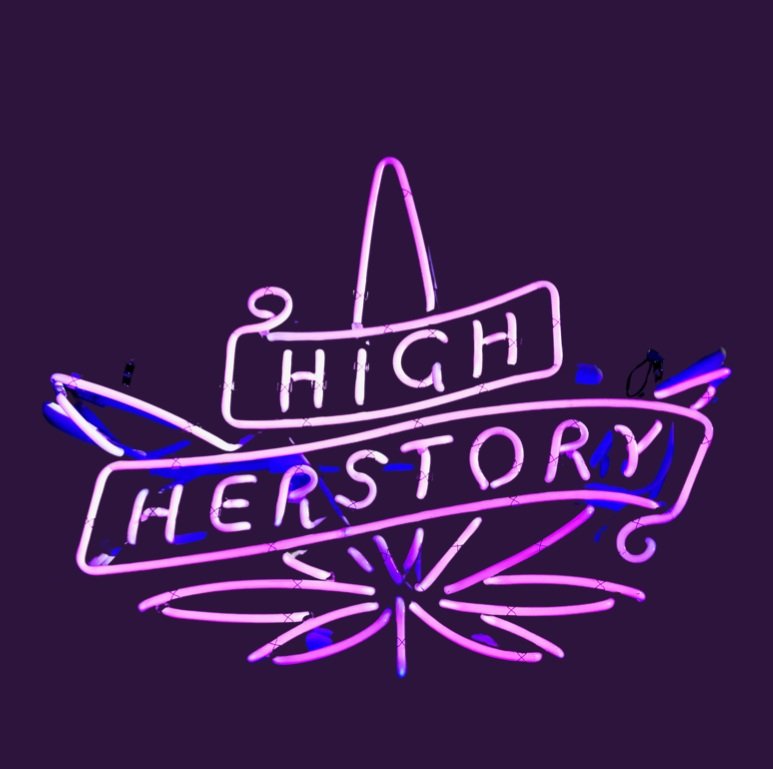


















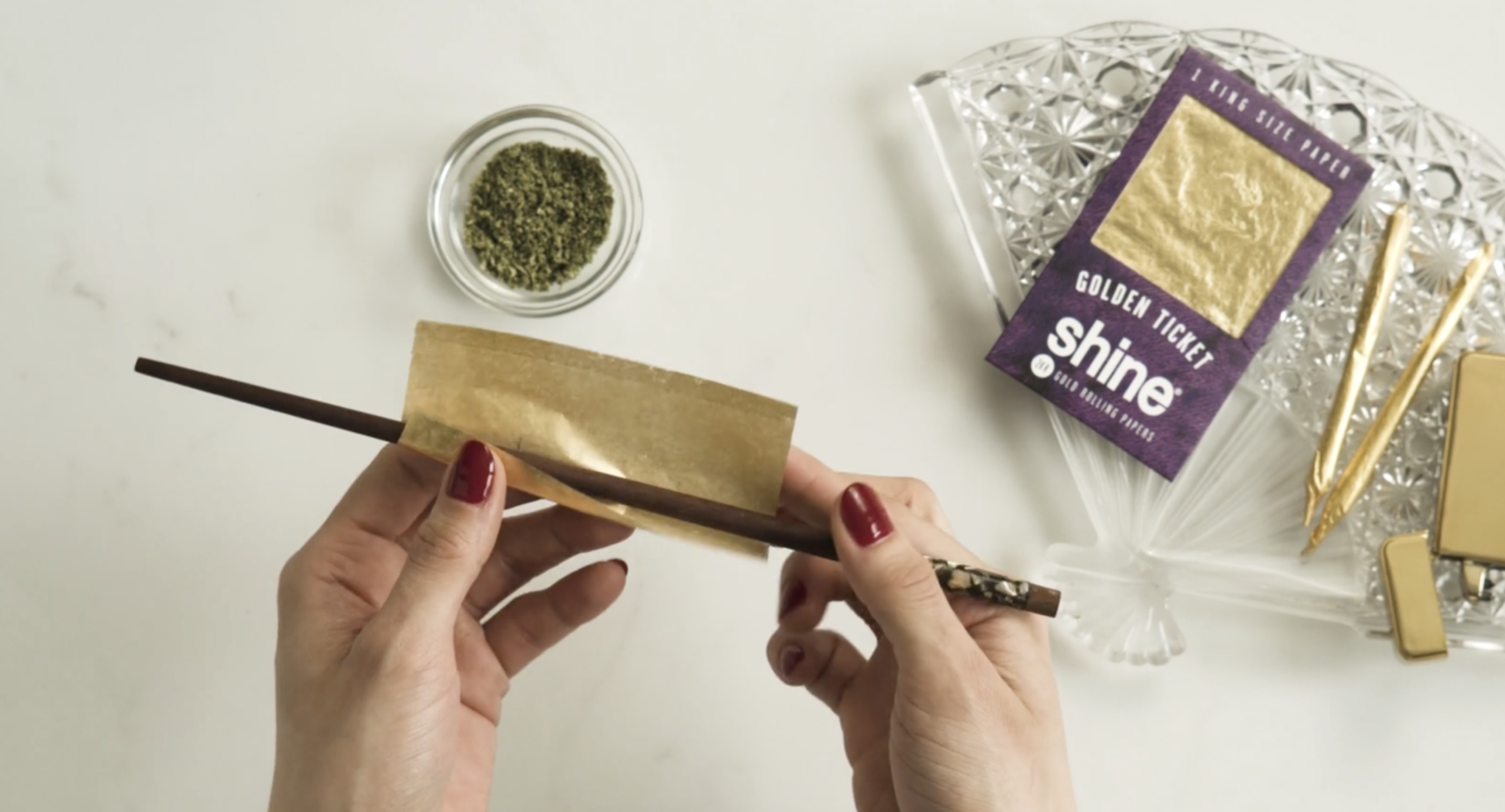



















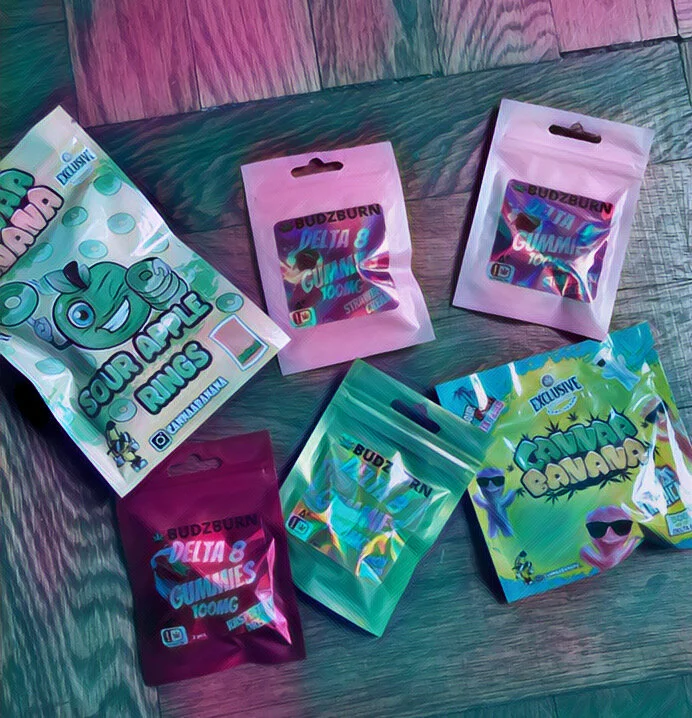



















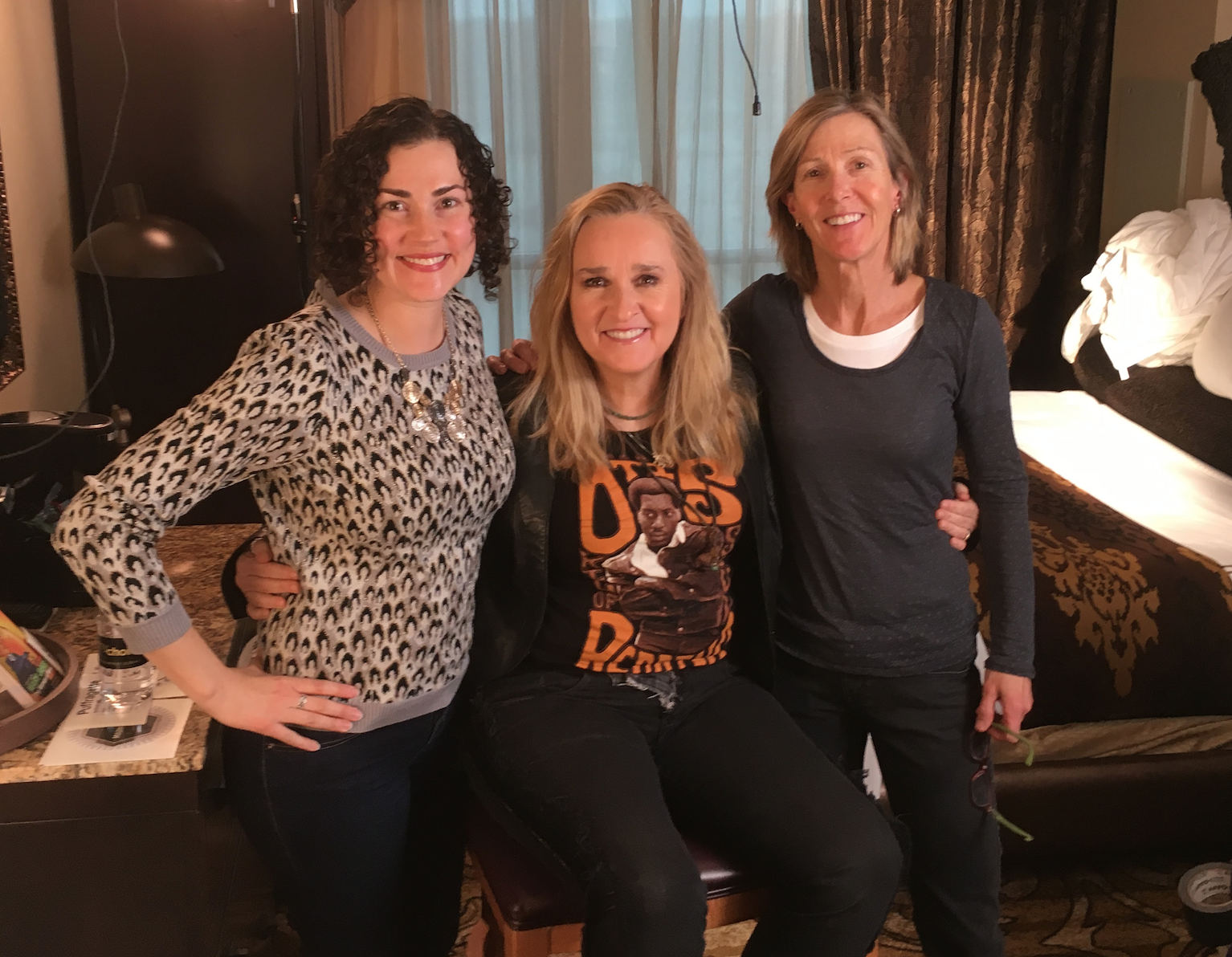








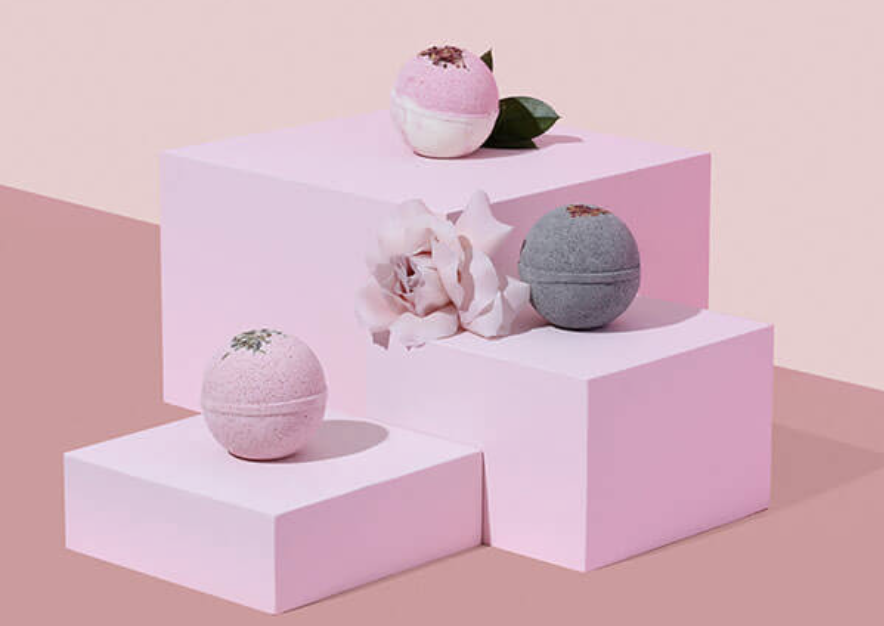




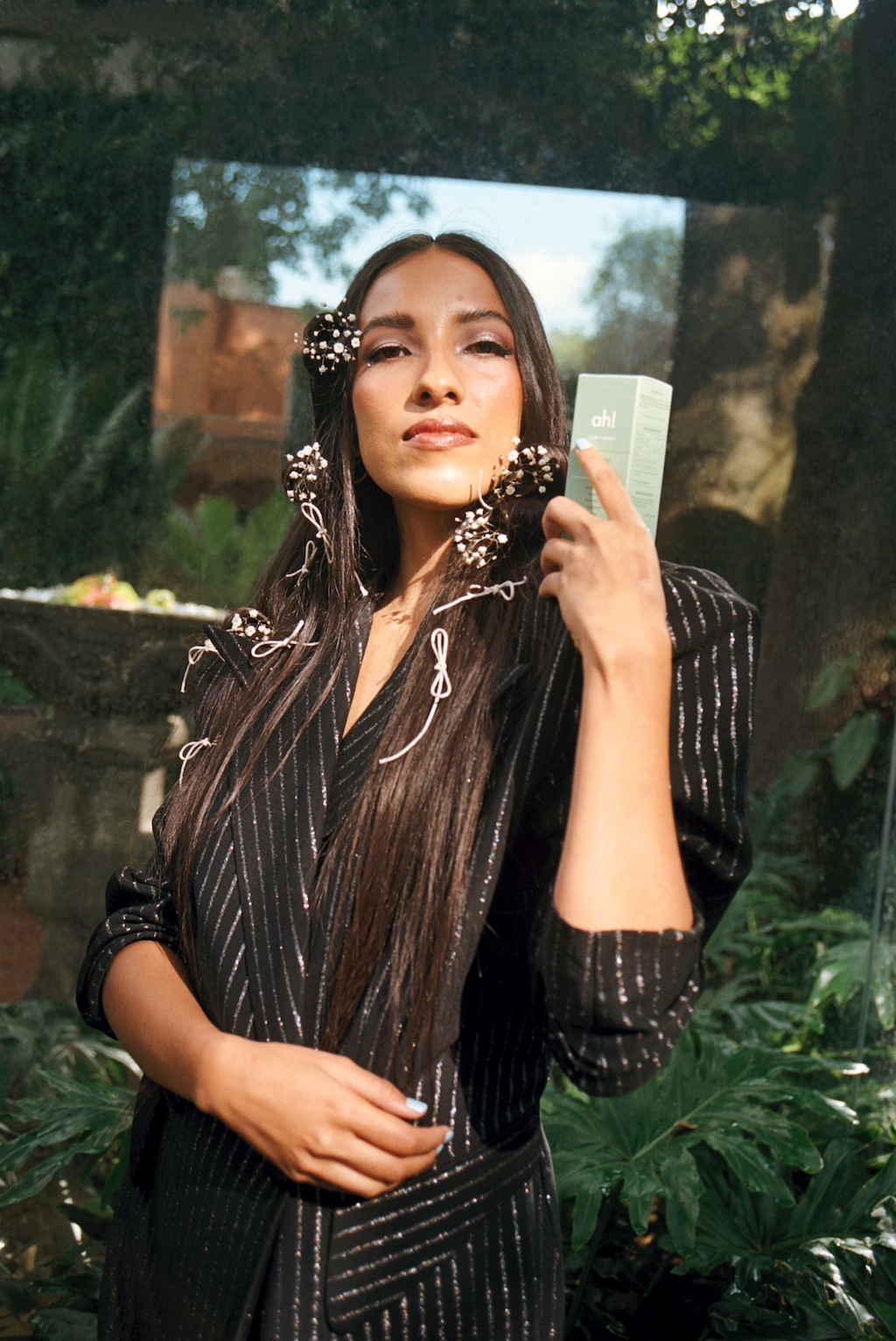





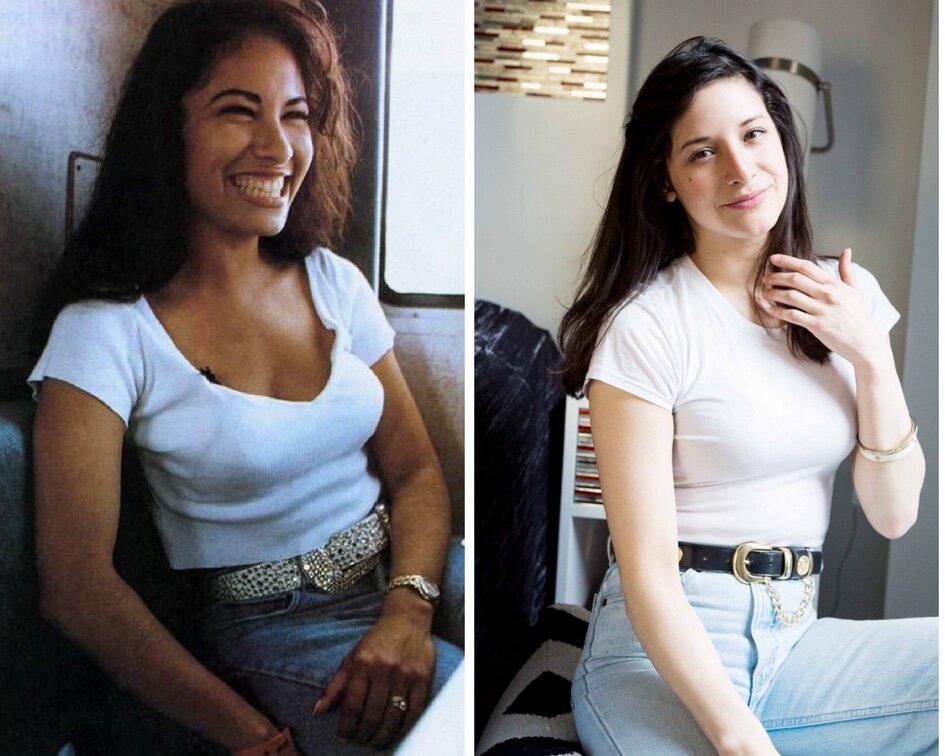











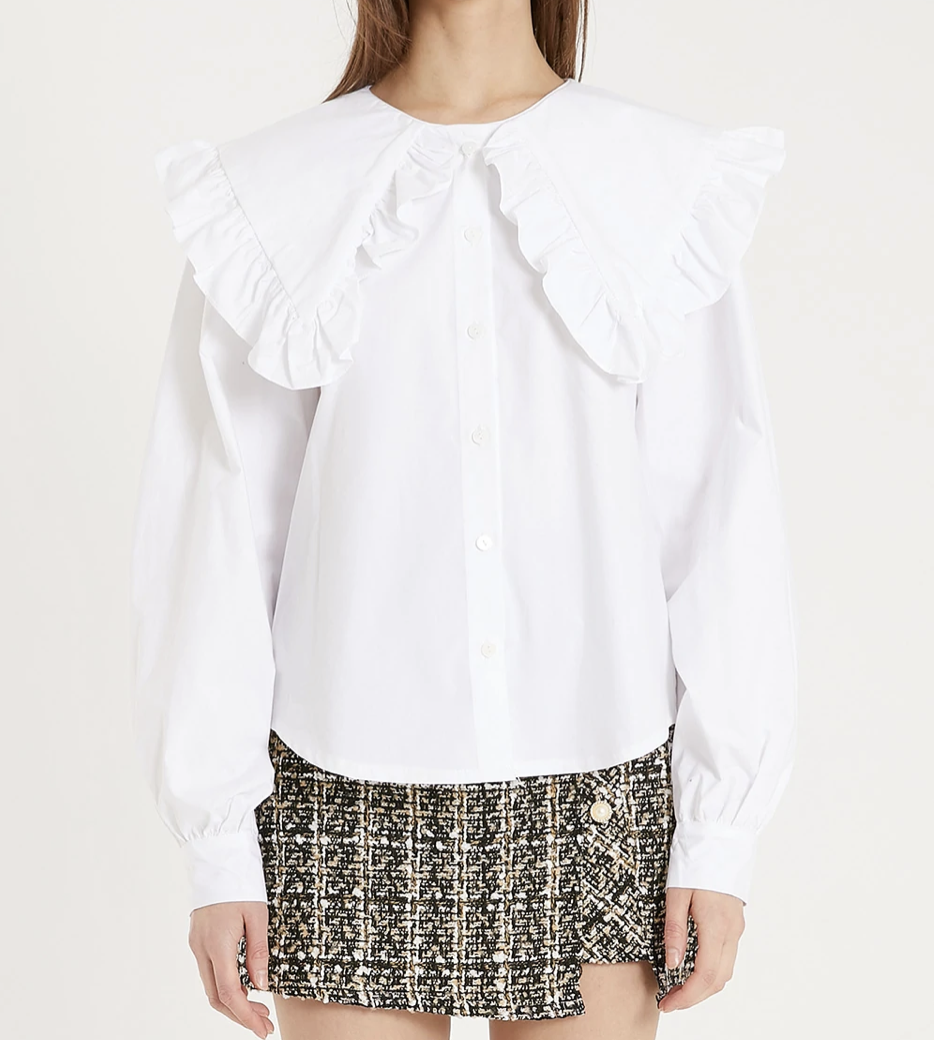
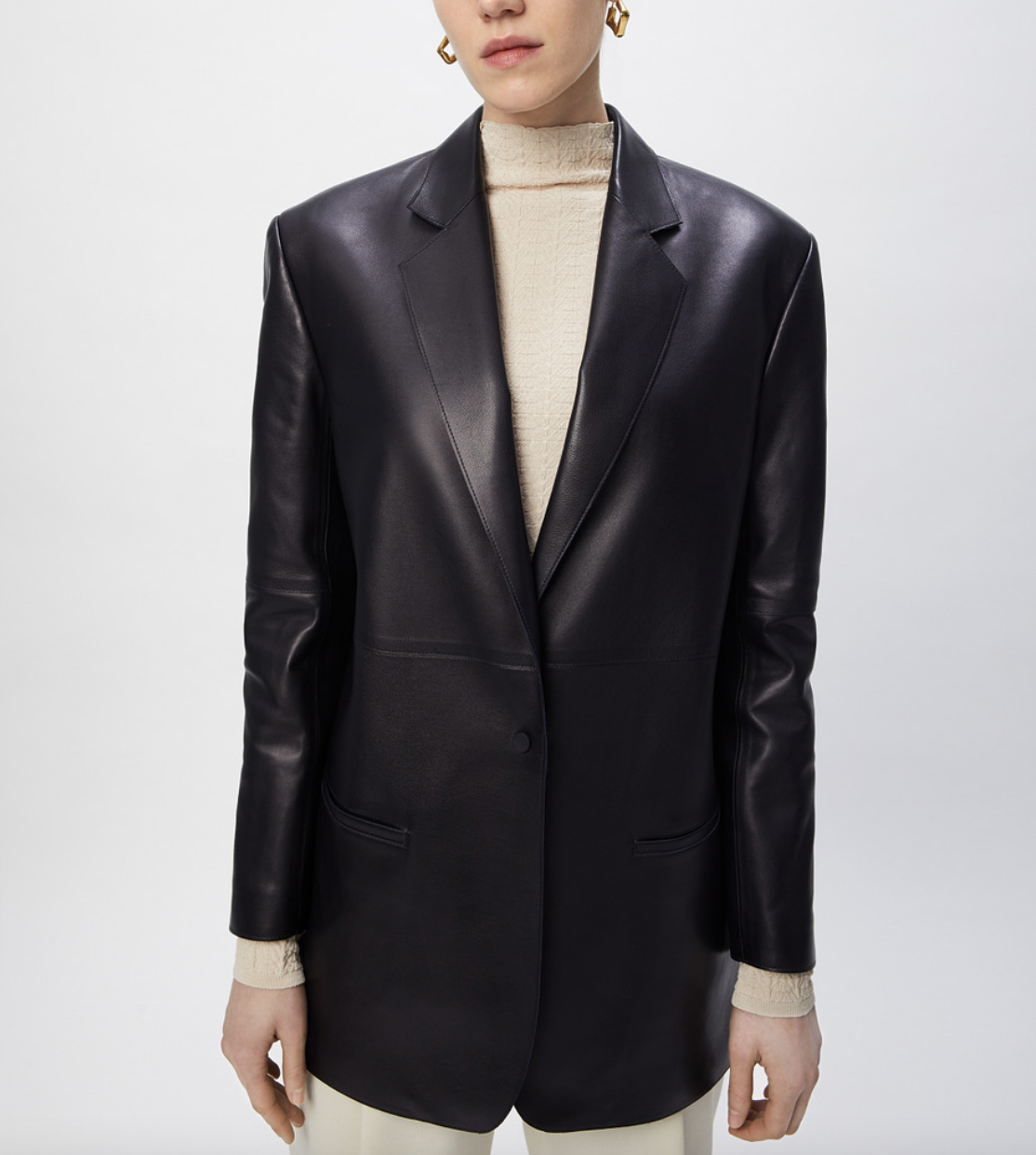
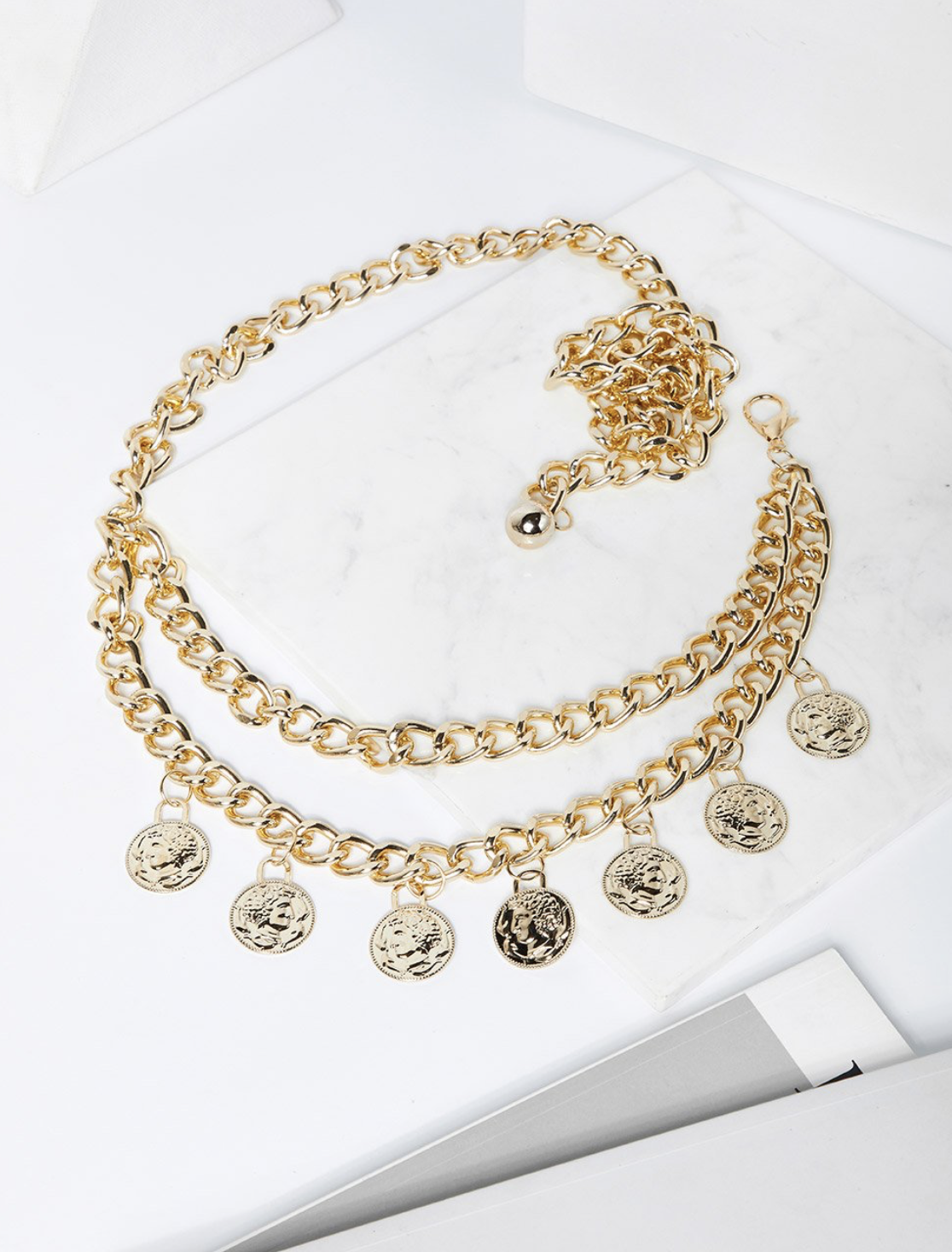





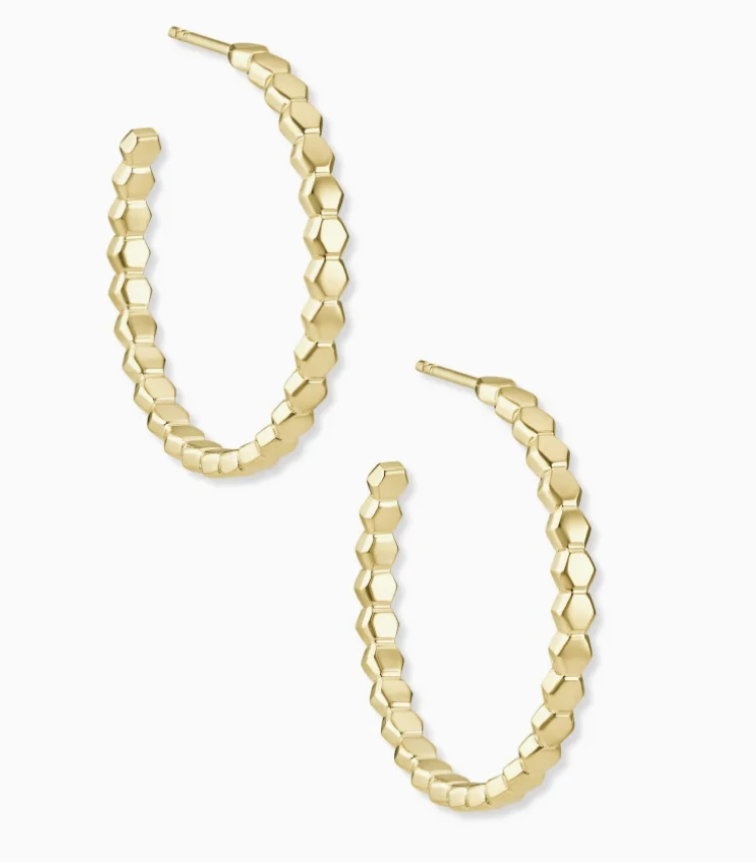
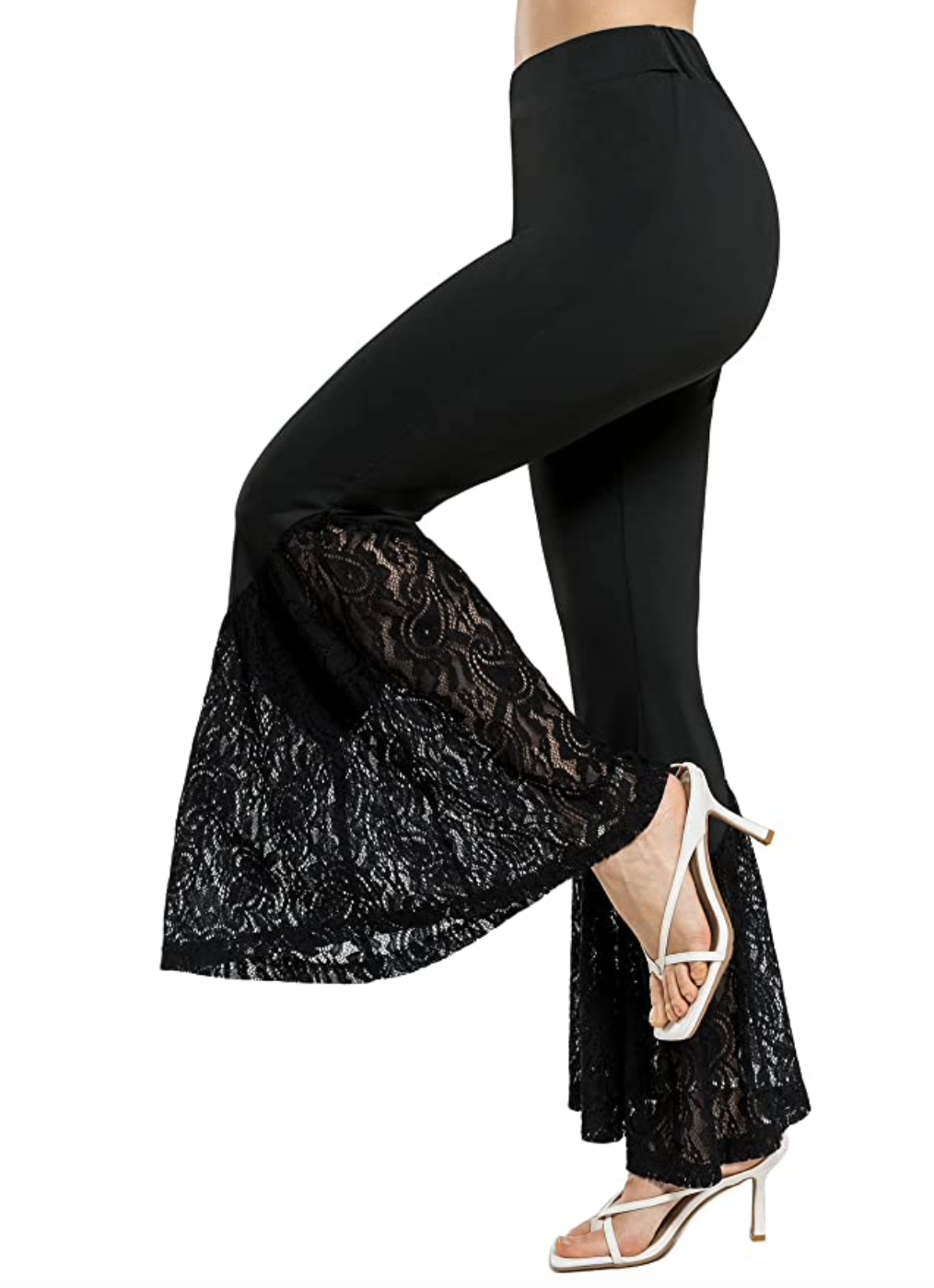

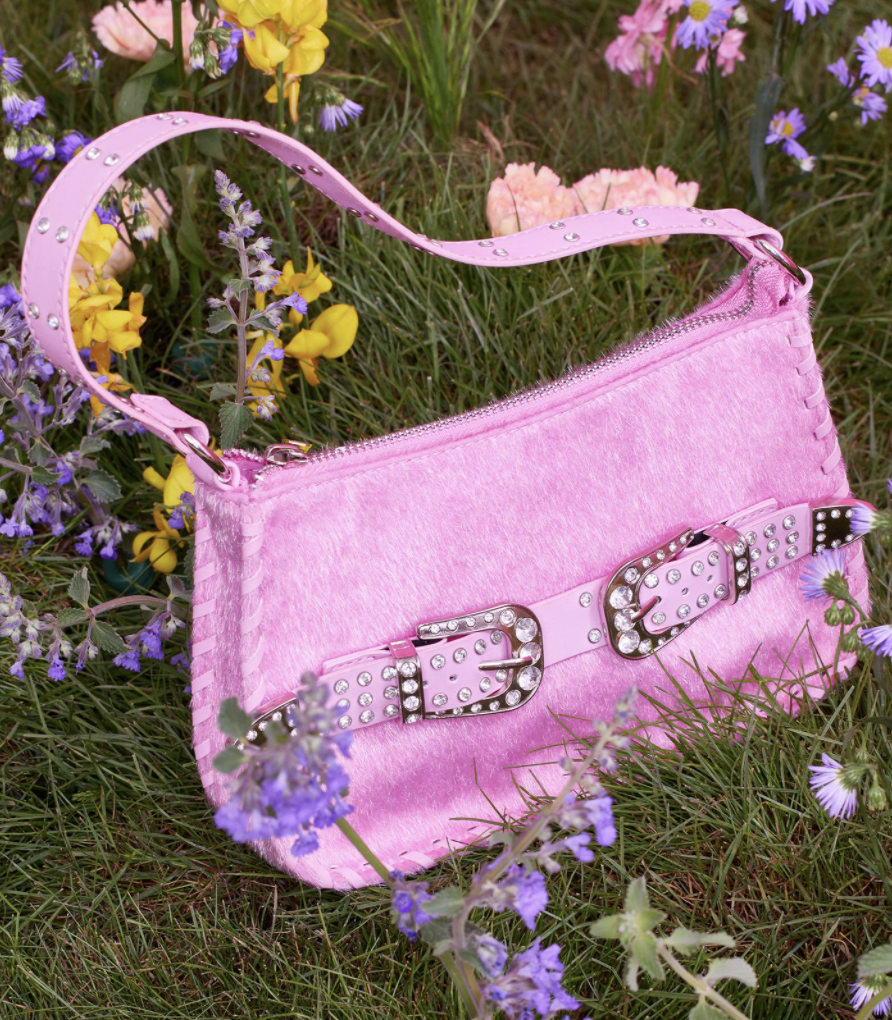





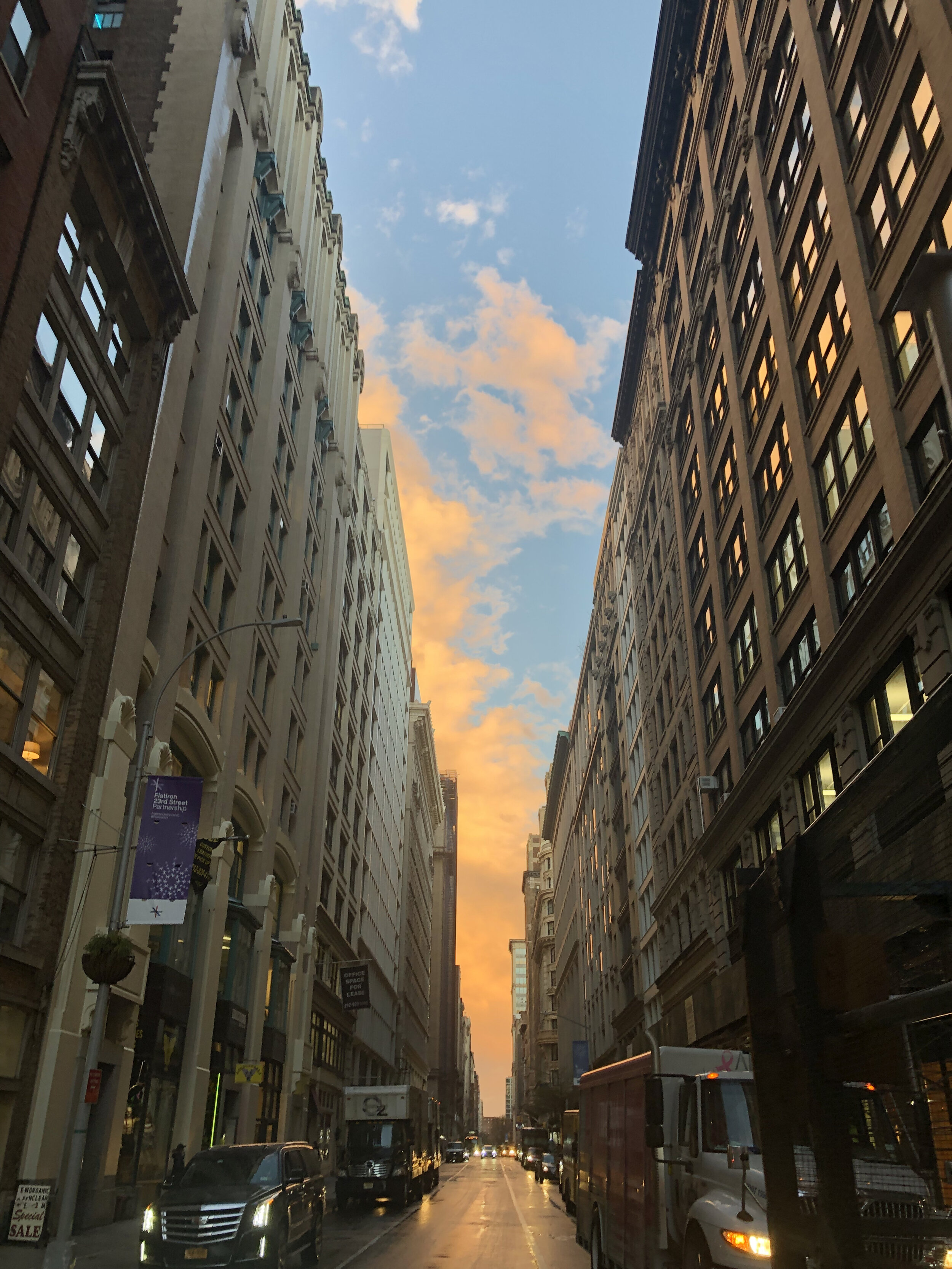

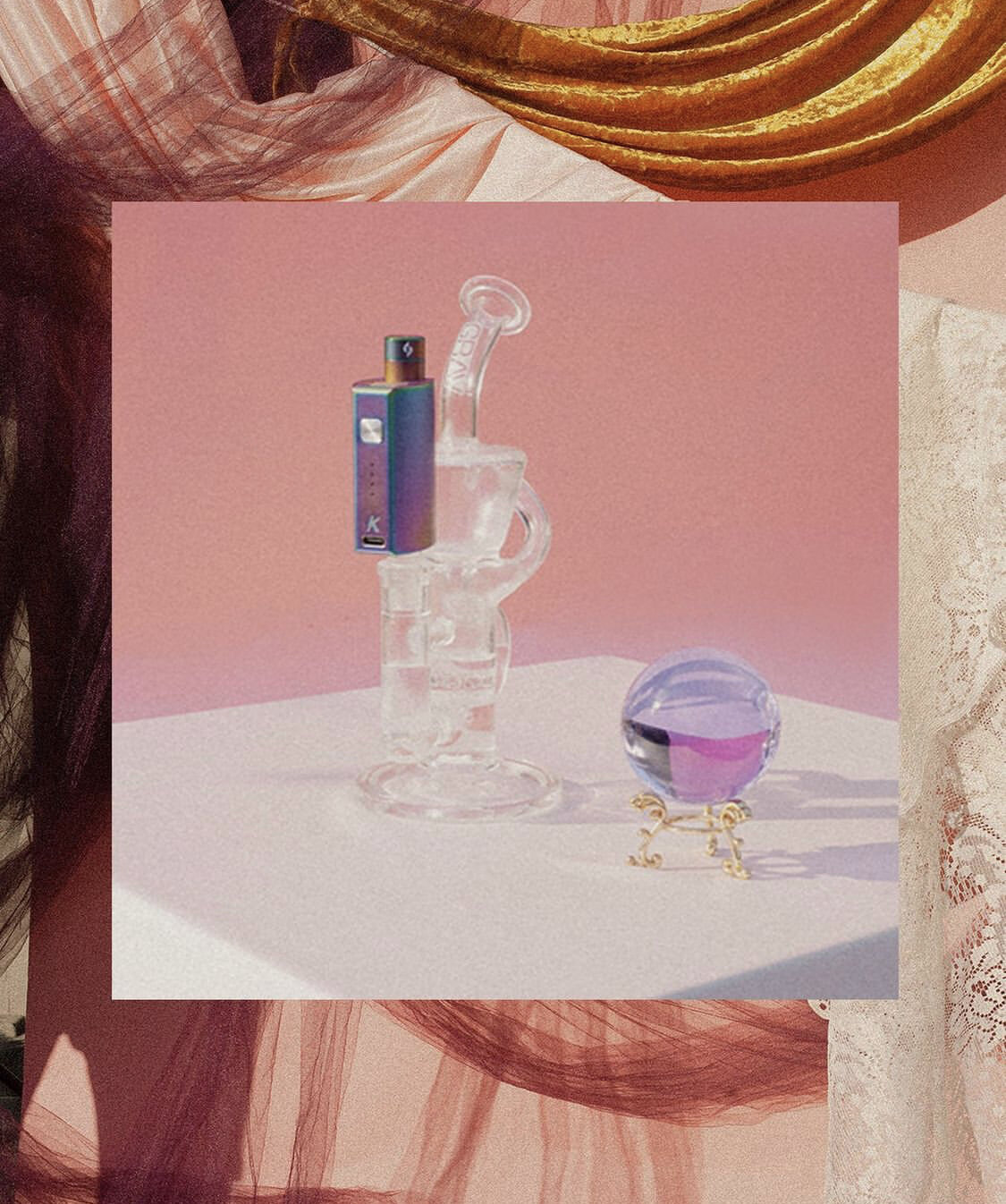
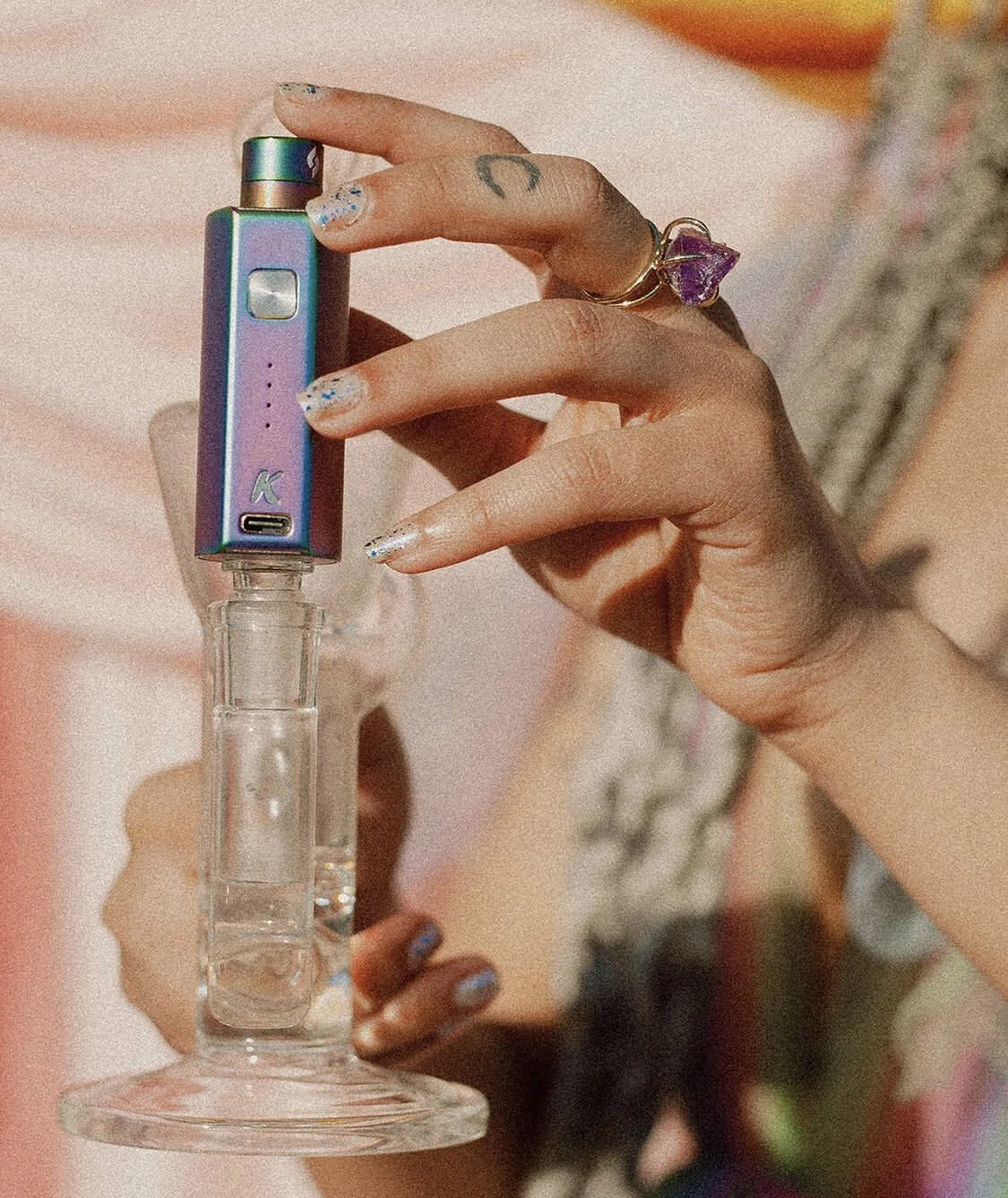
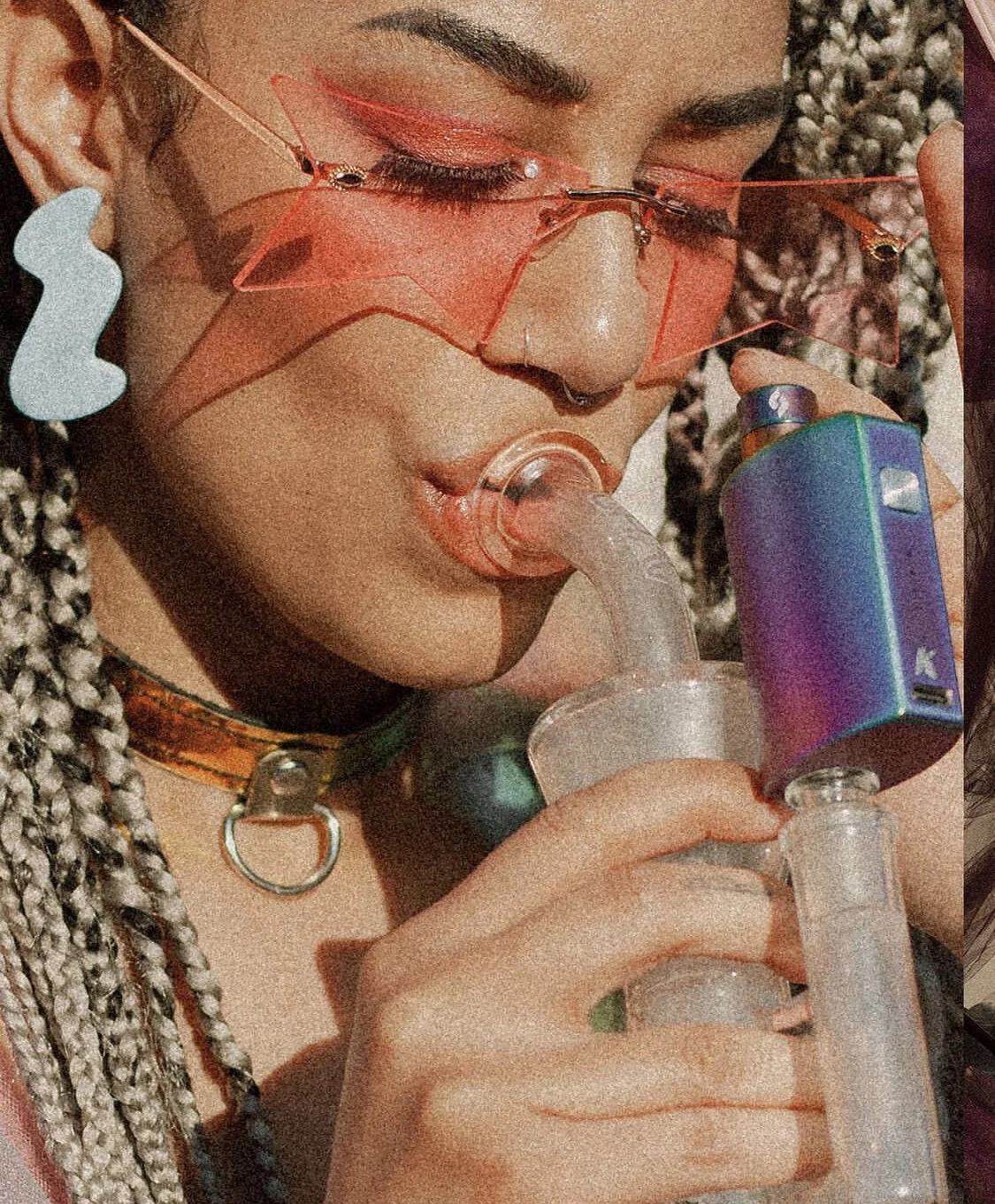

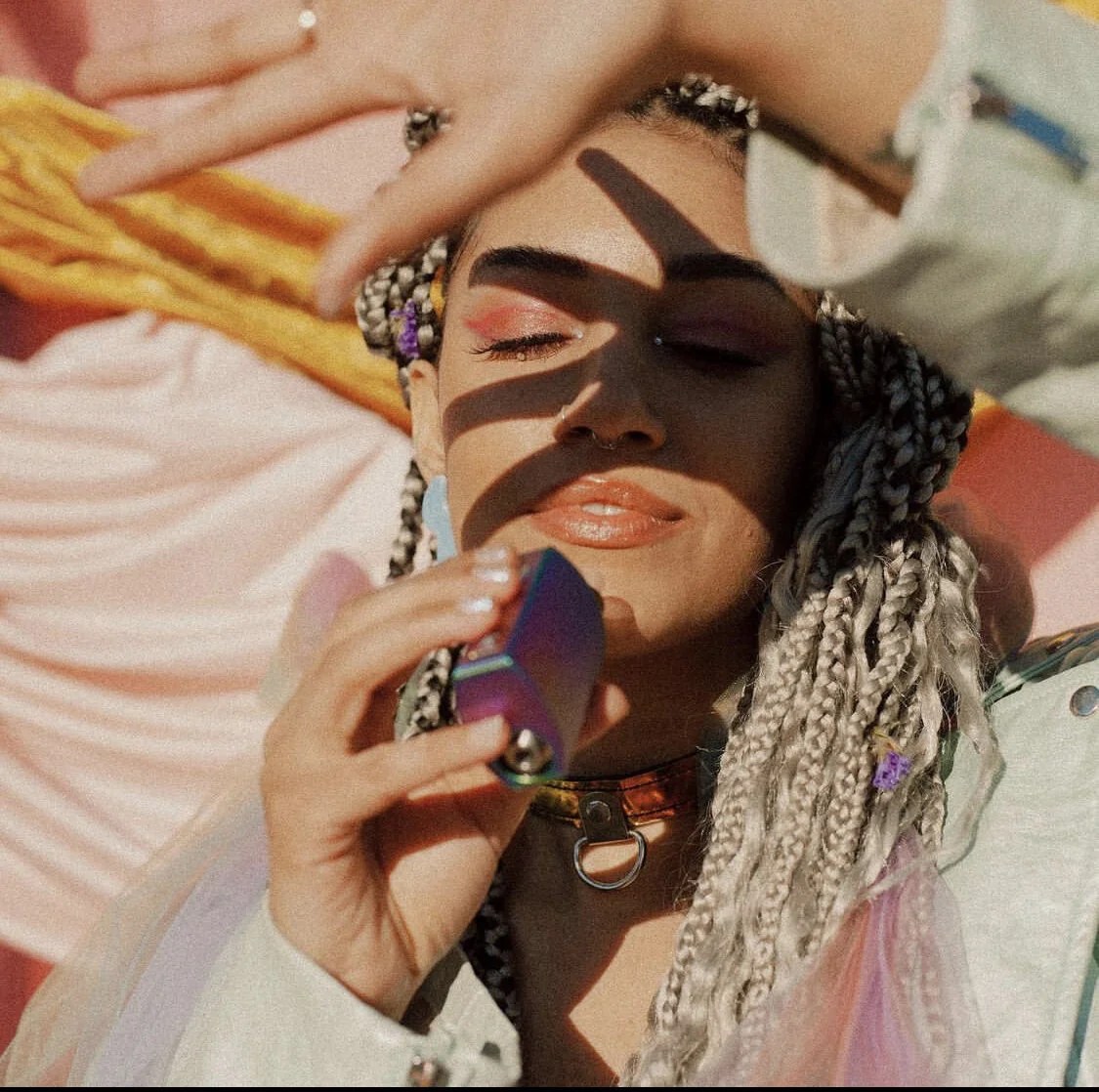





















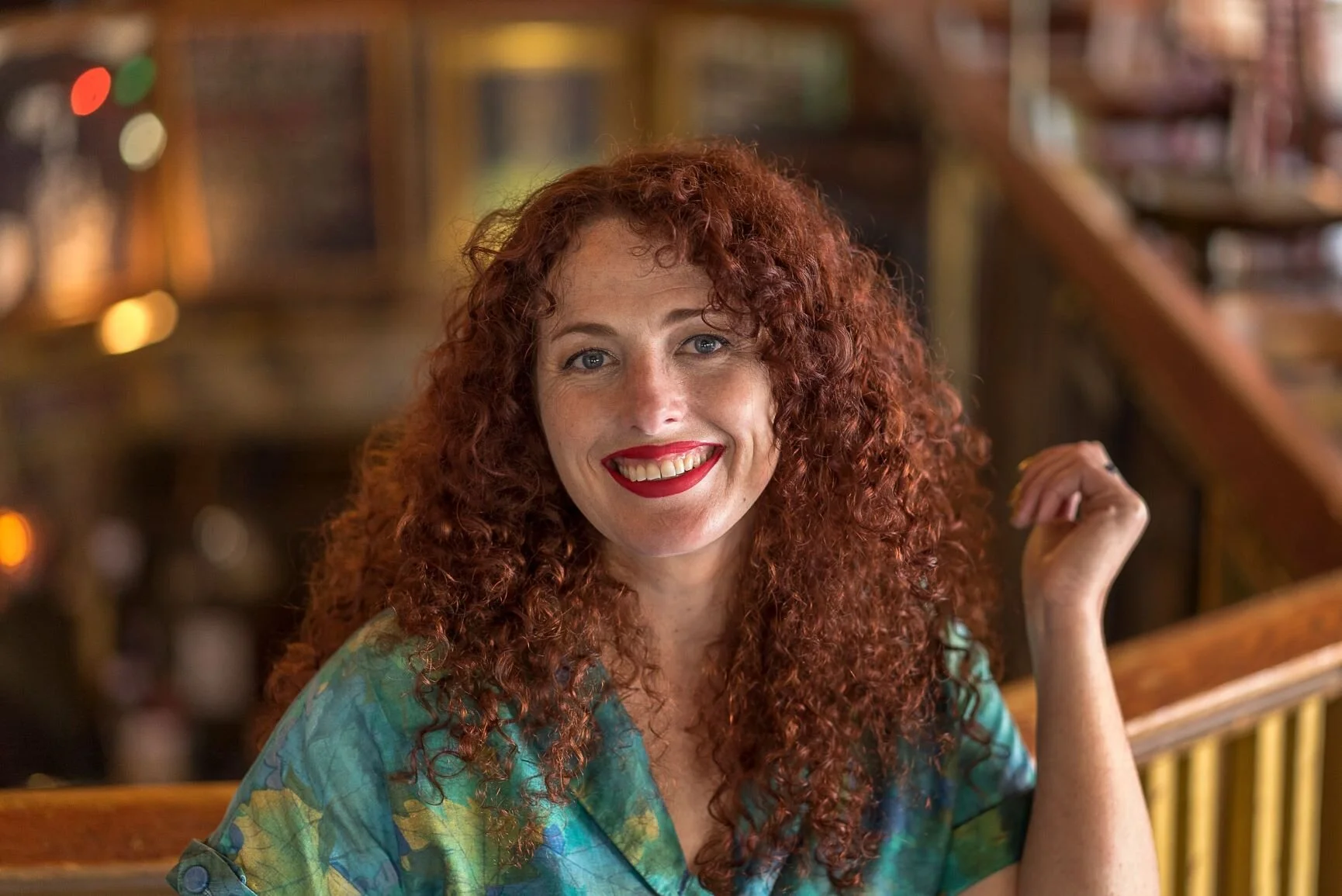
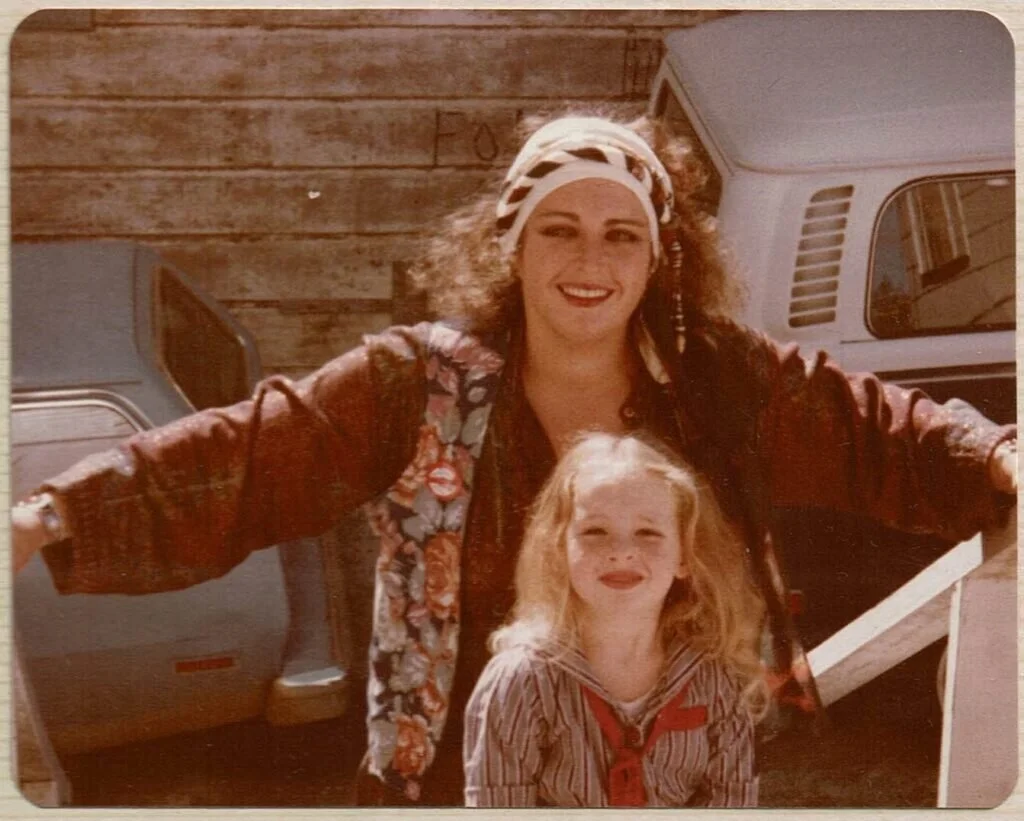

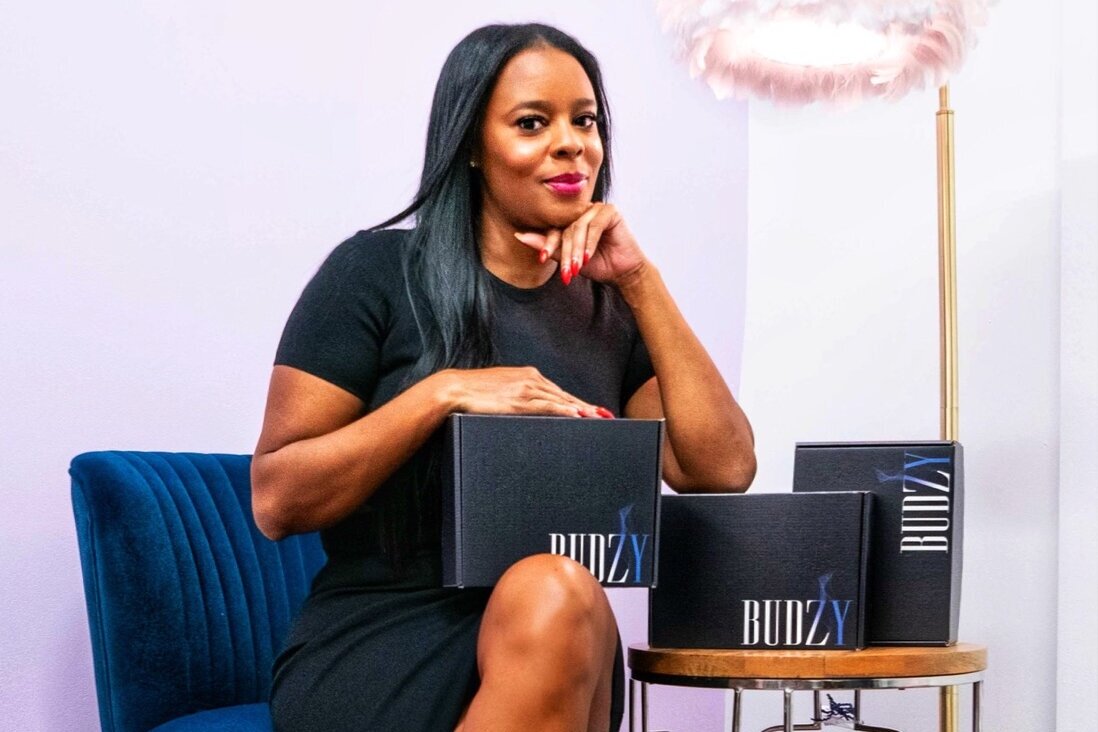


Halloween is just around the corner, and if you're looking for a unique, eye-catching costume that celebrates cannabis culture, look no further! This guide will walk you through creating your very own DIY stoner girl costume that's sure to be a hit at any Halloween party or event. The best part? It’s really easy to make! Perfect for last-minute plans.